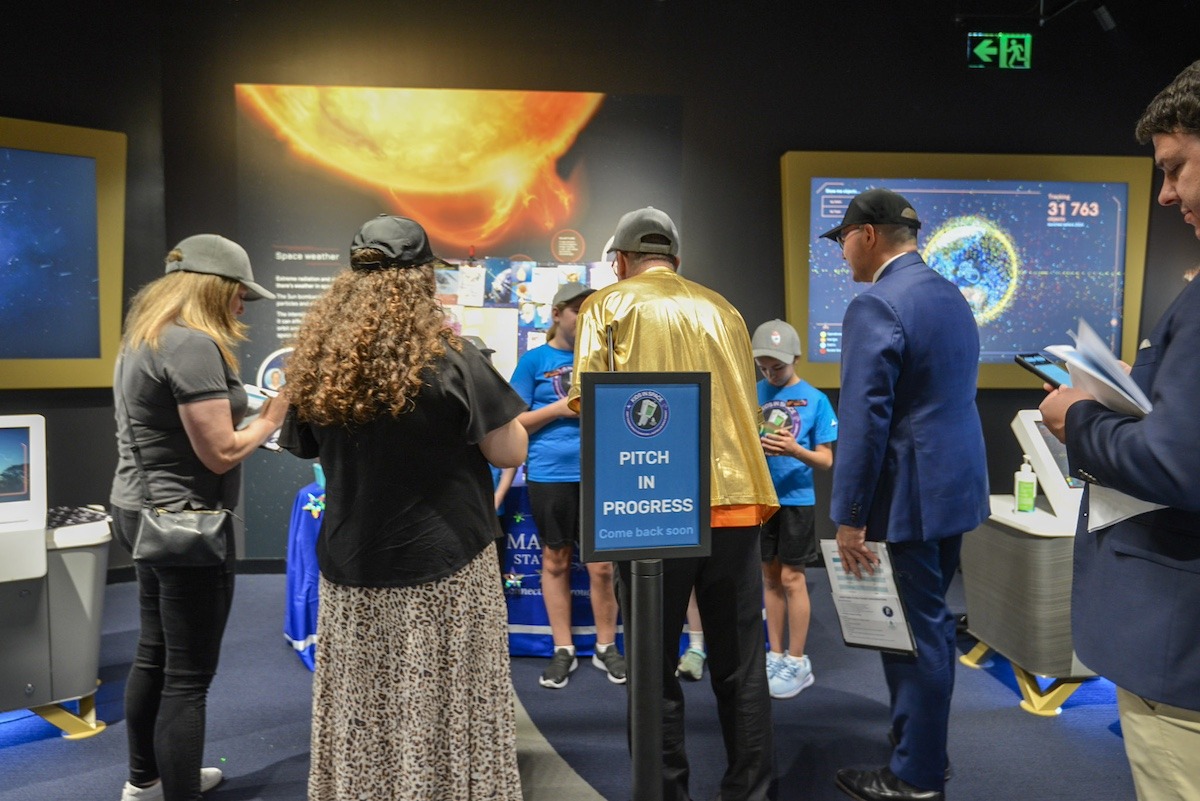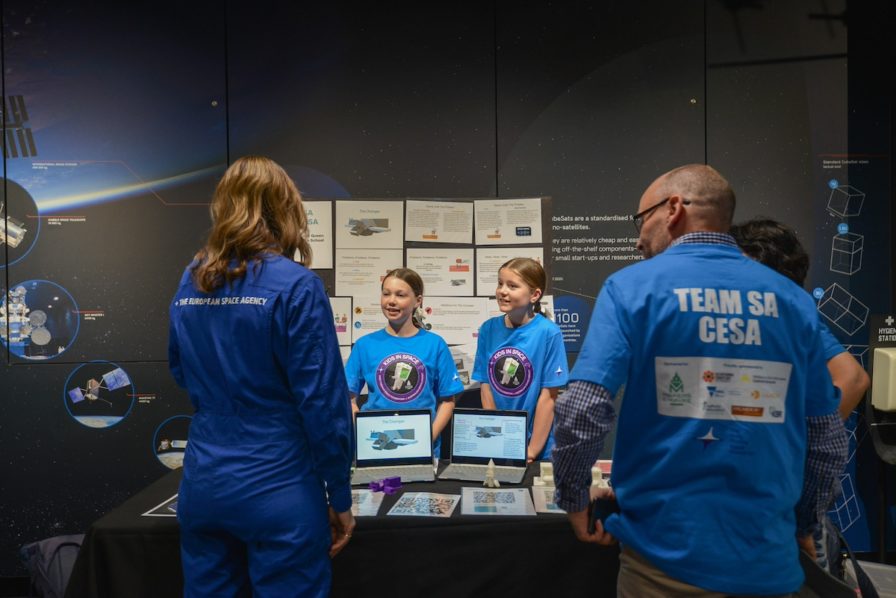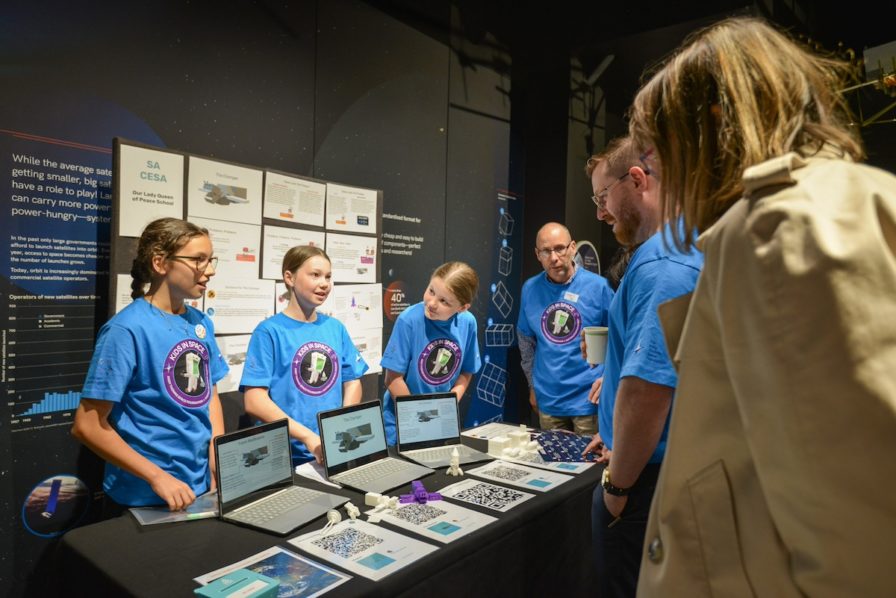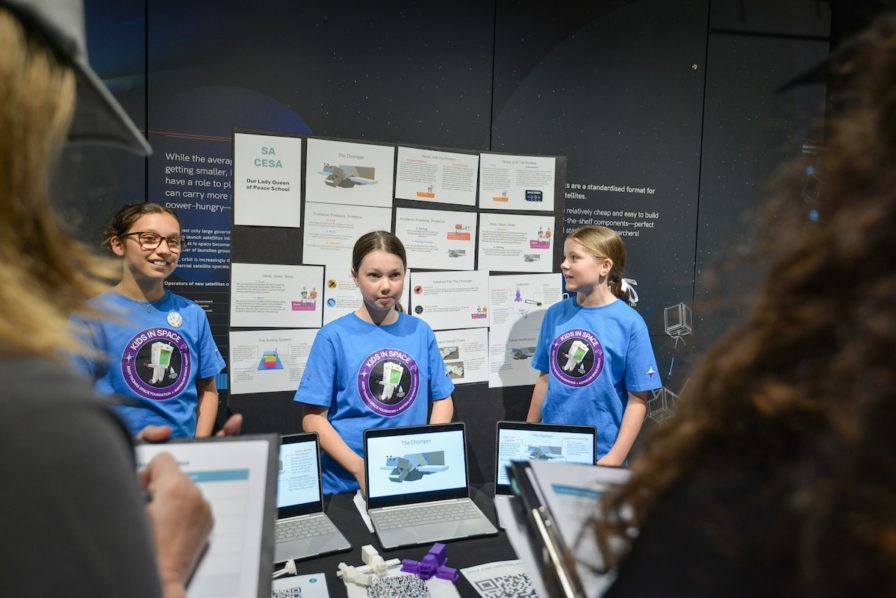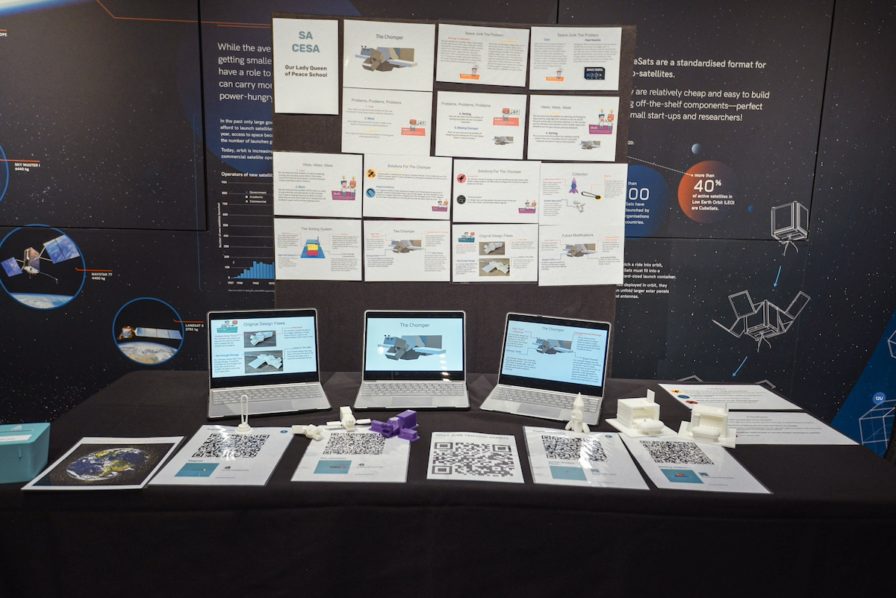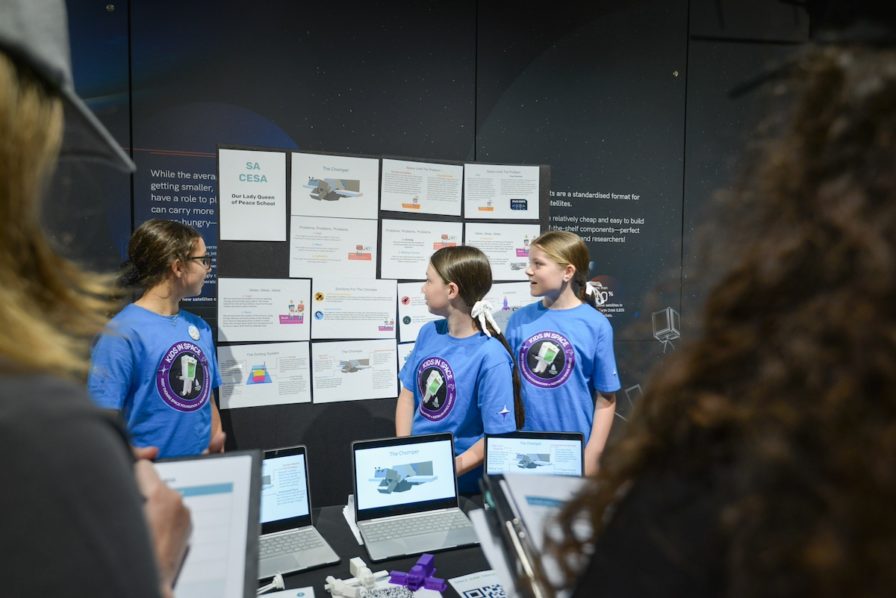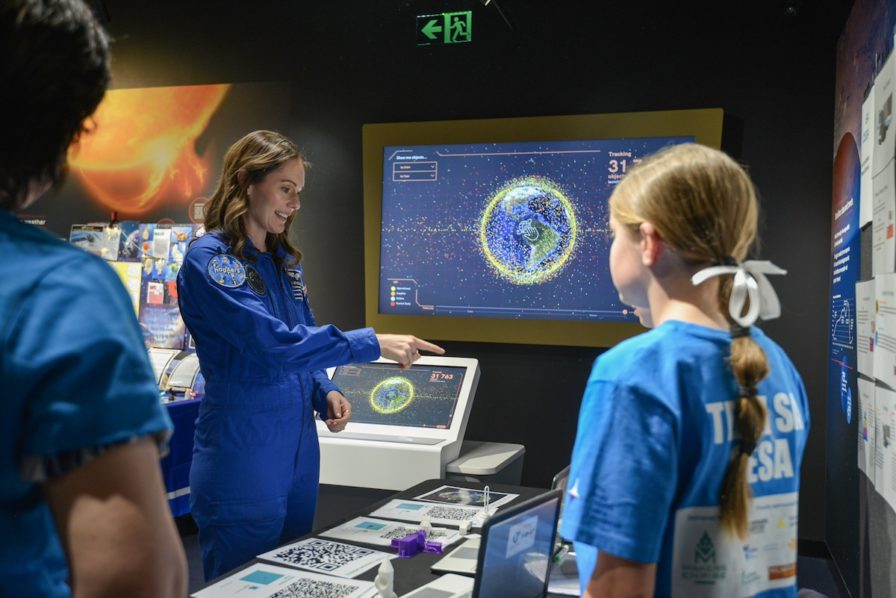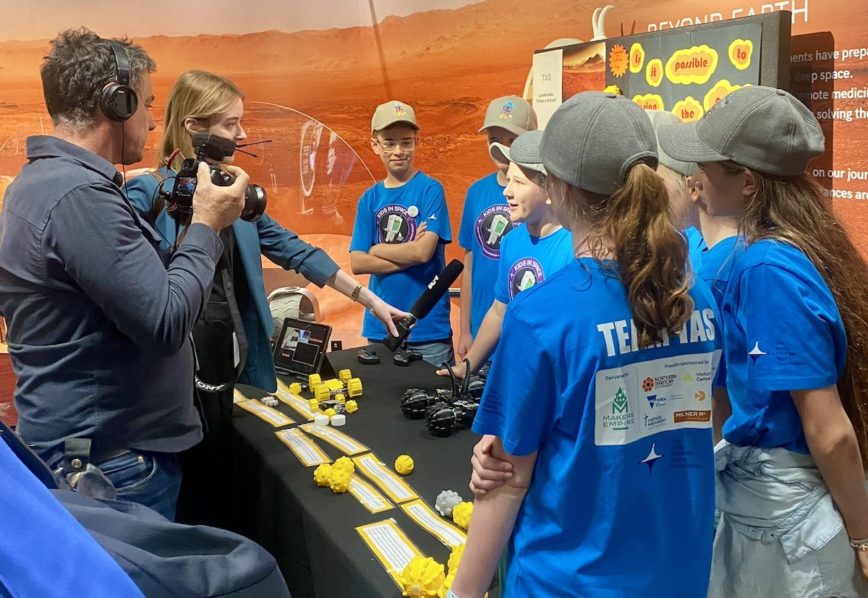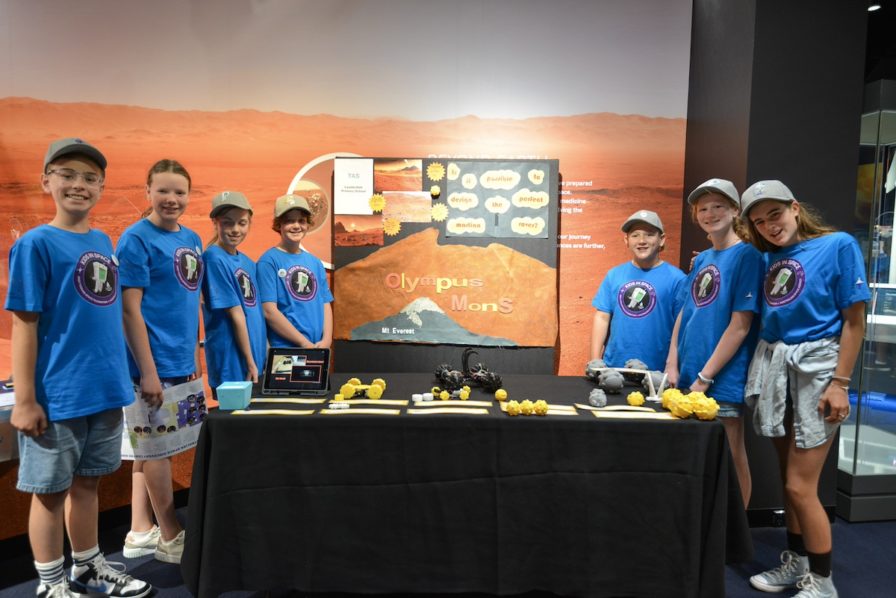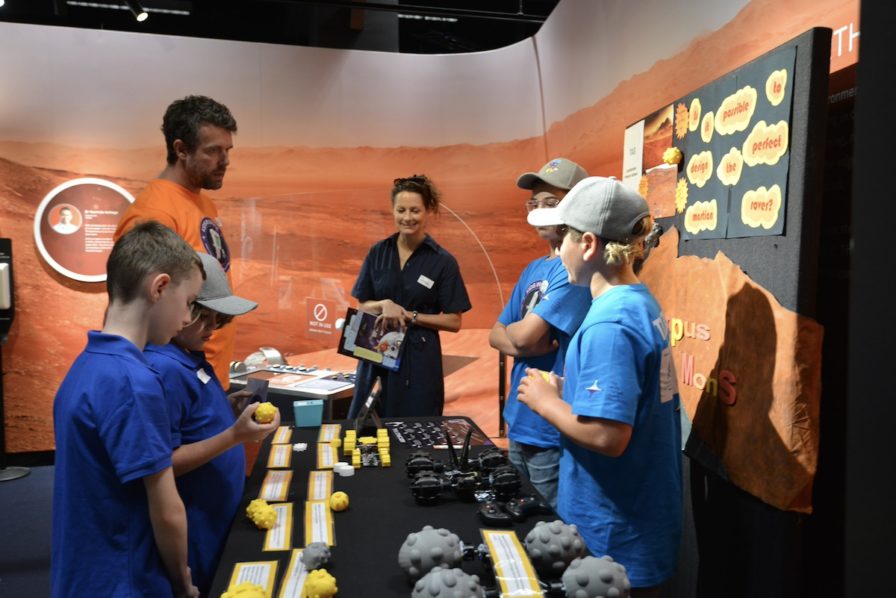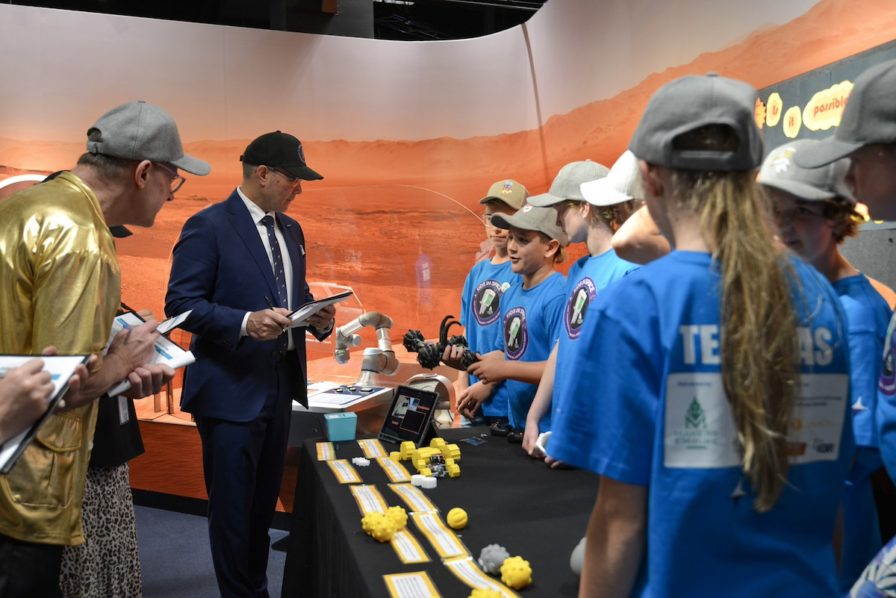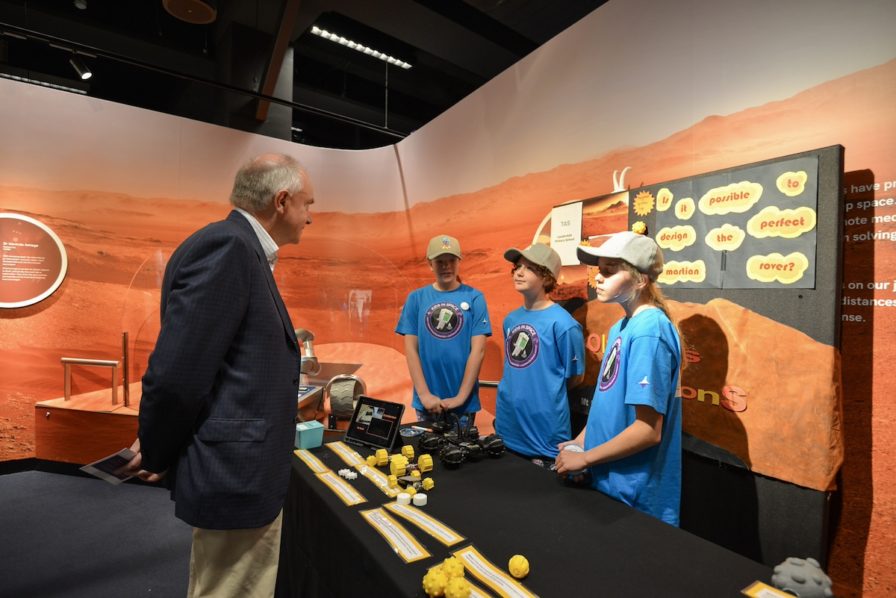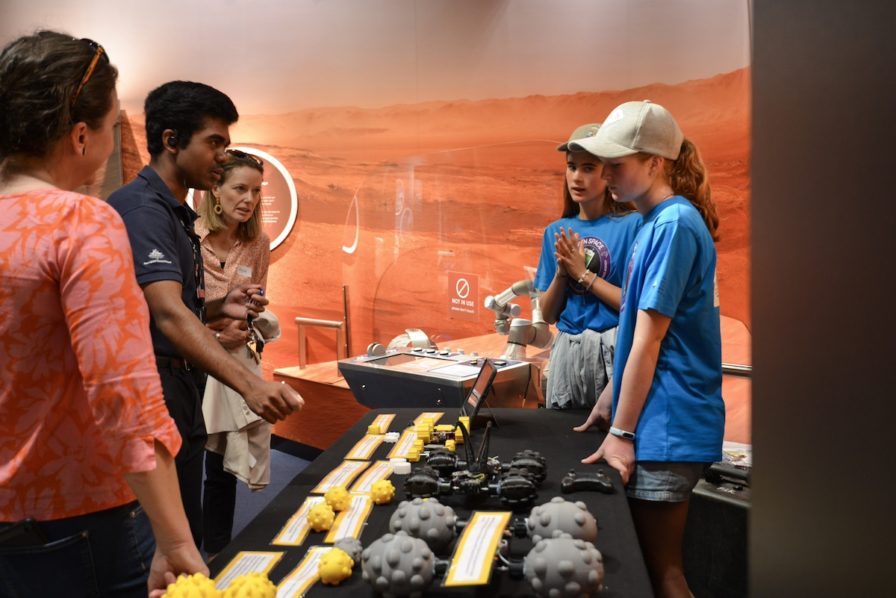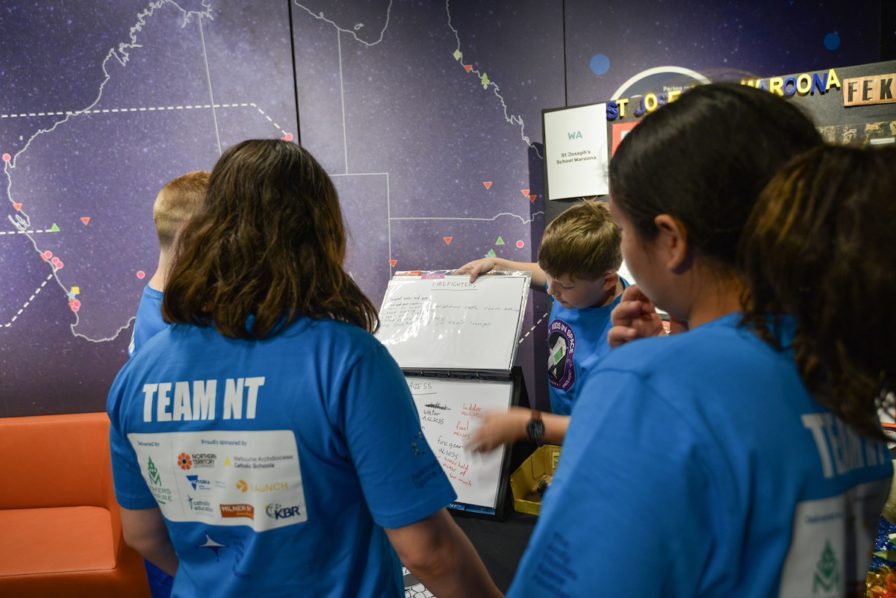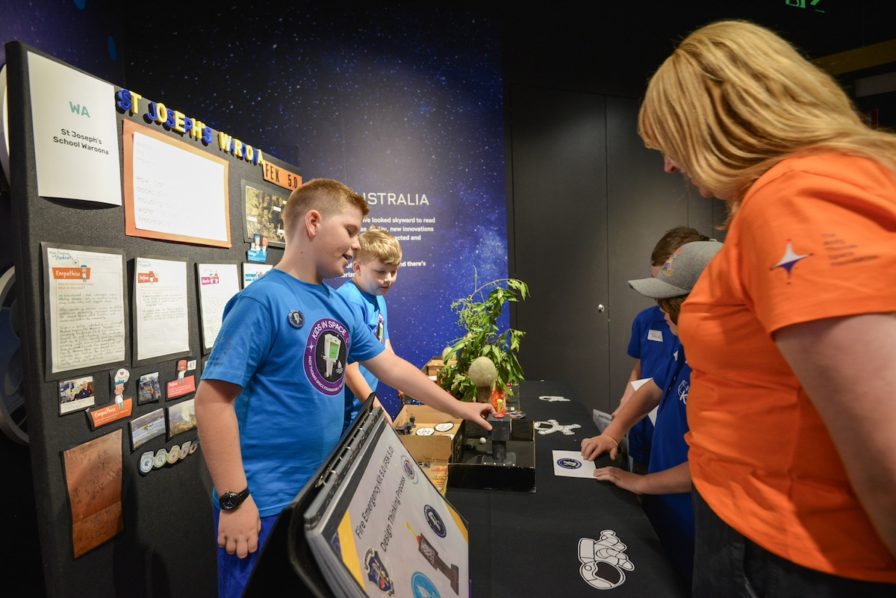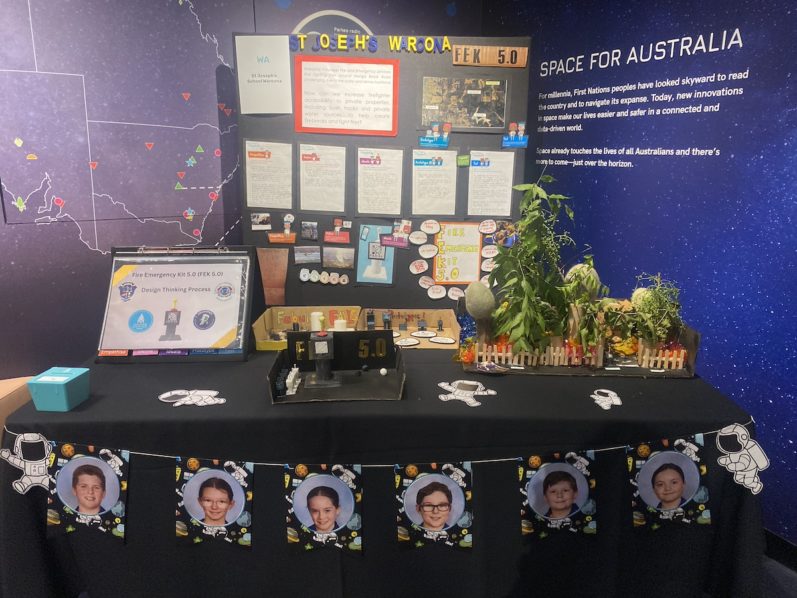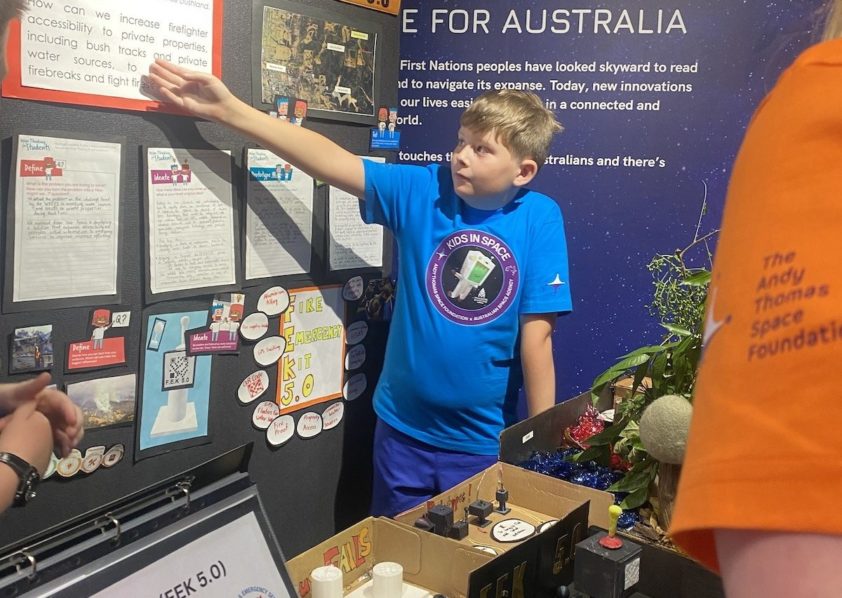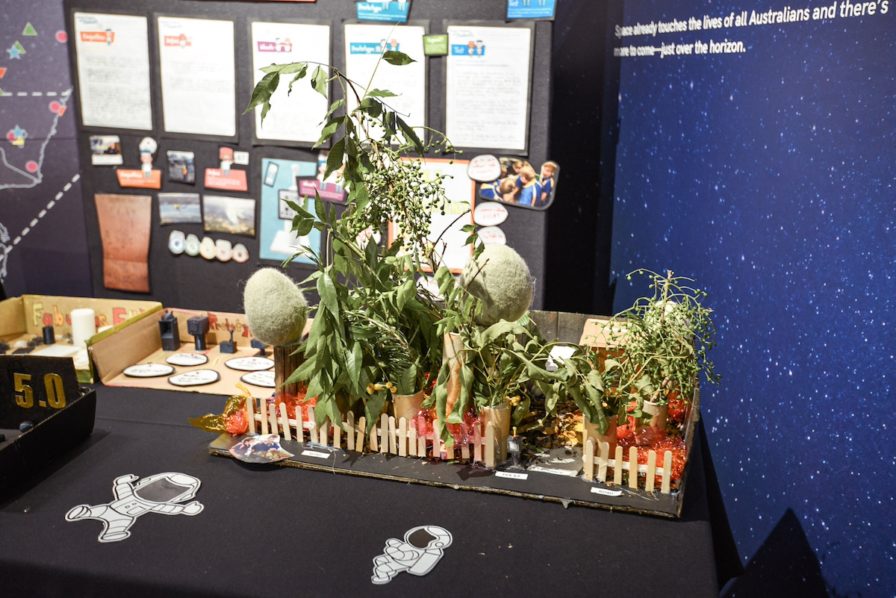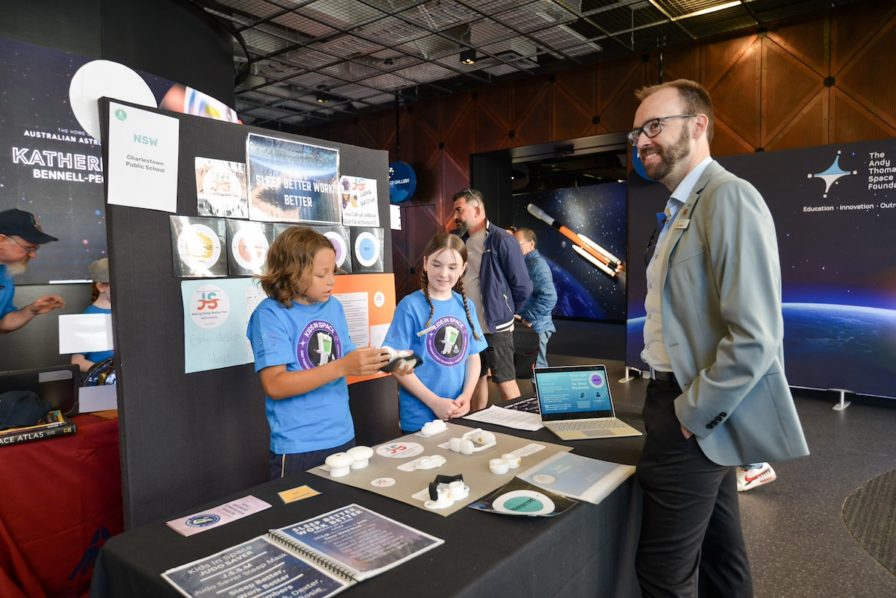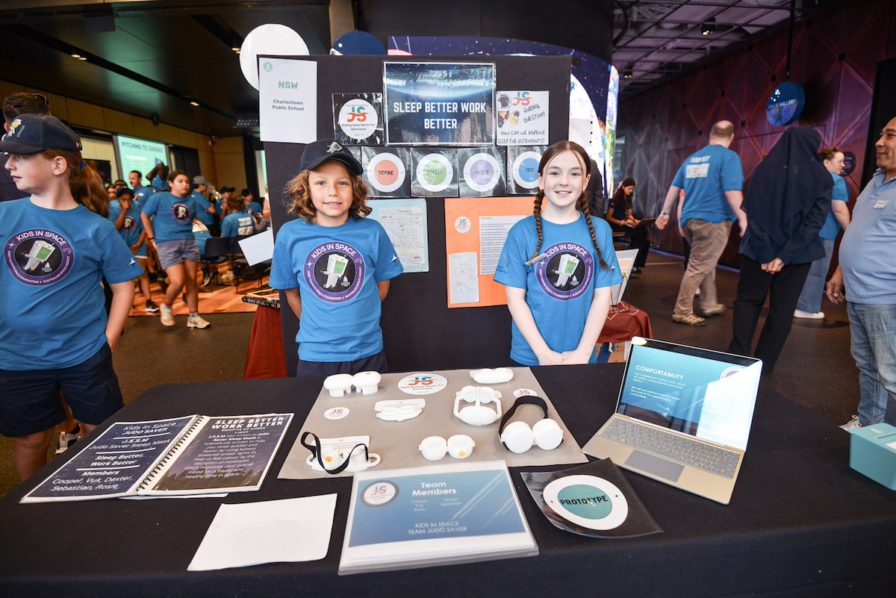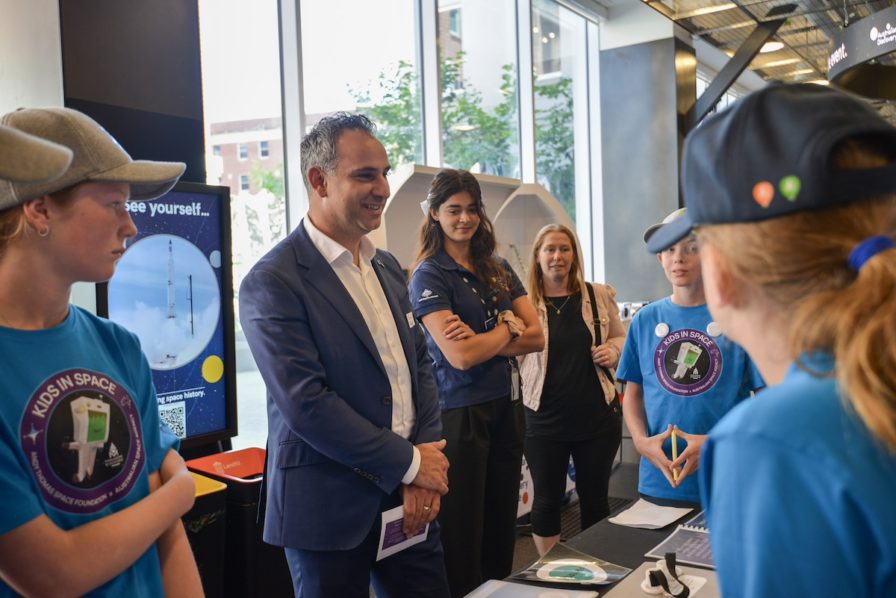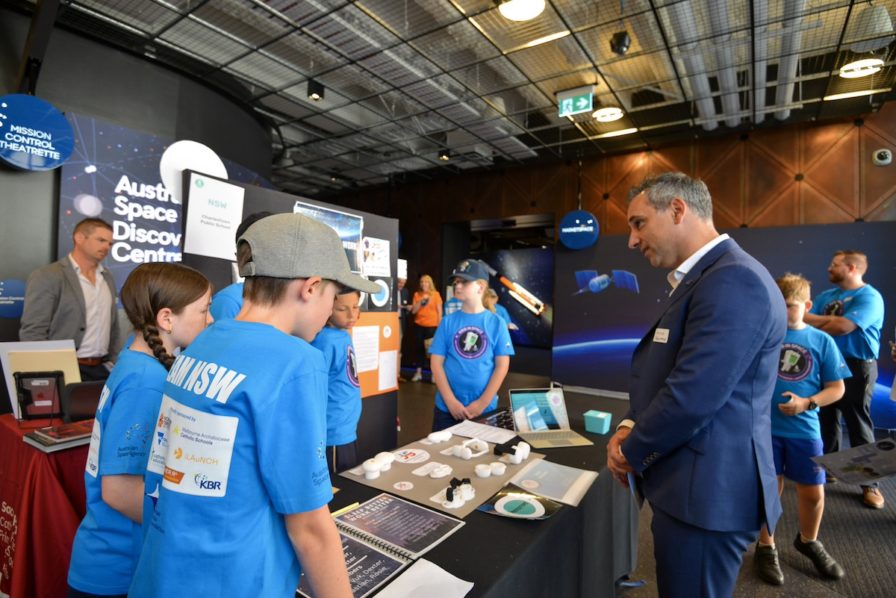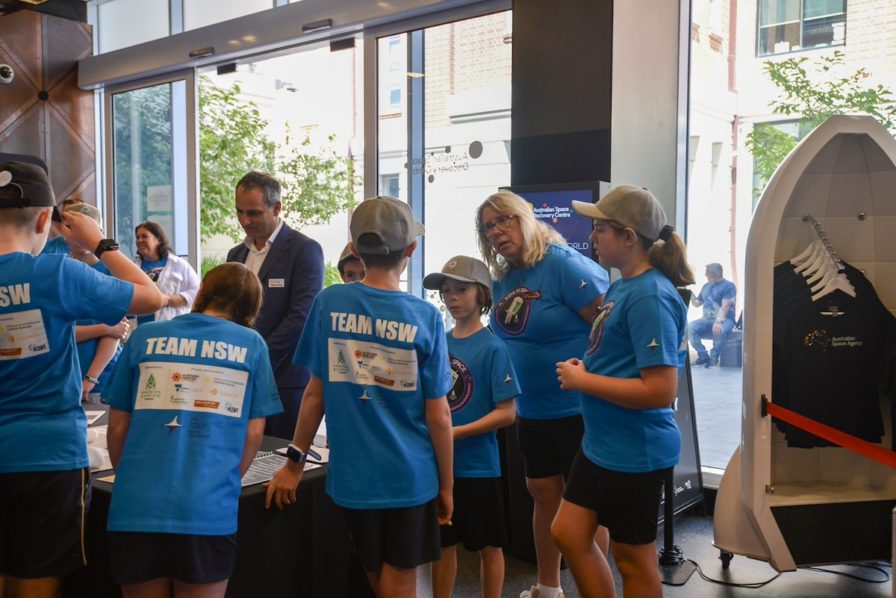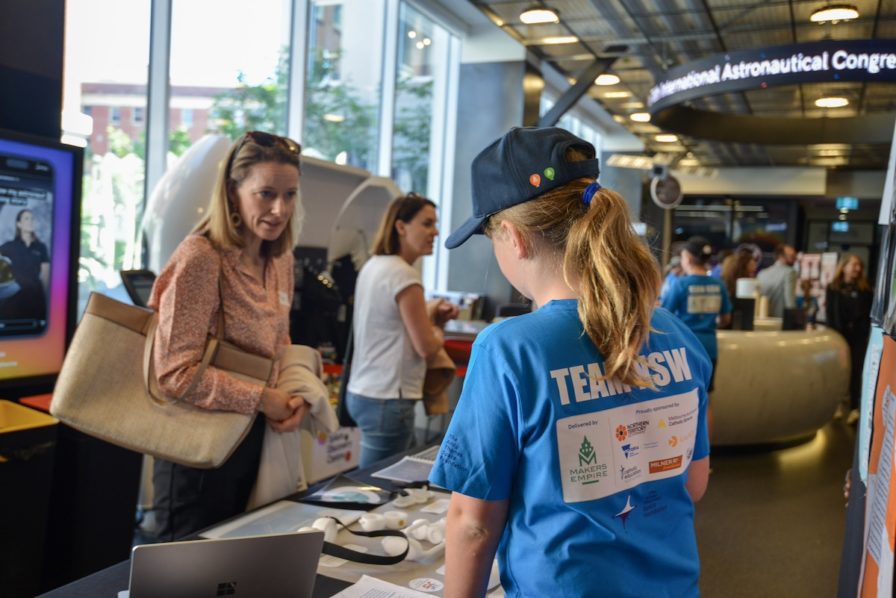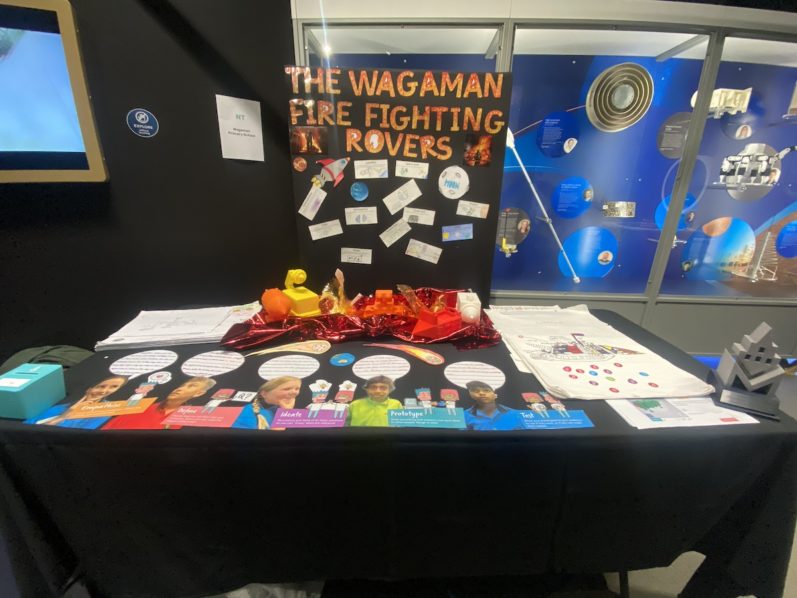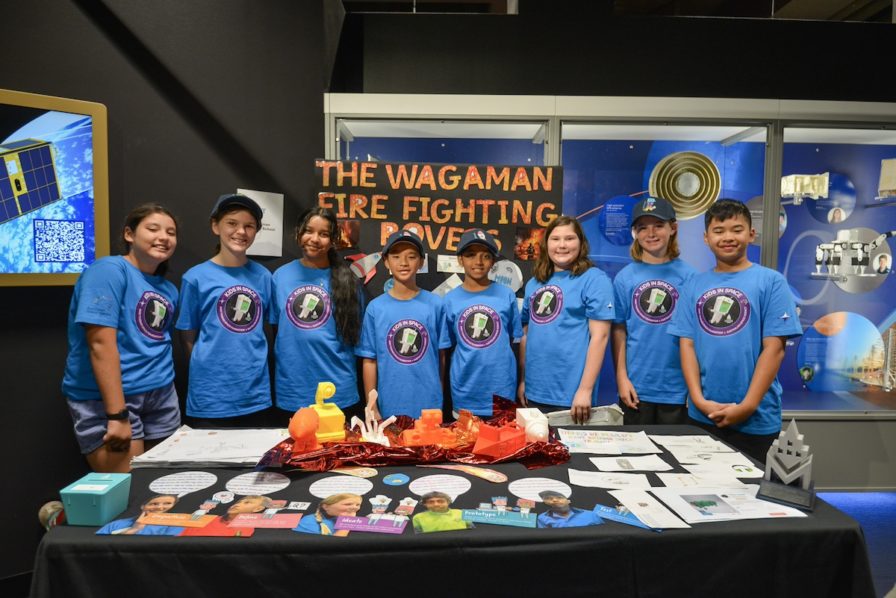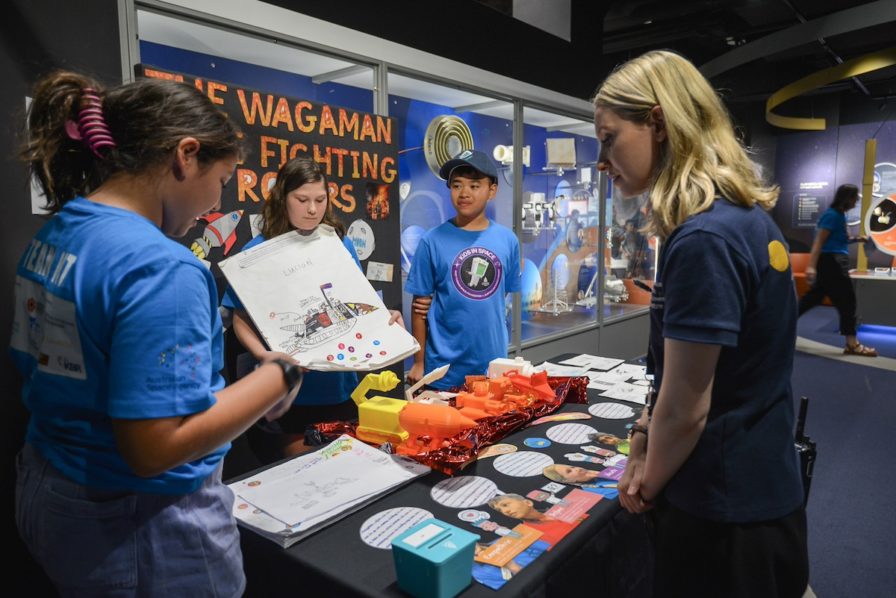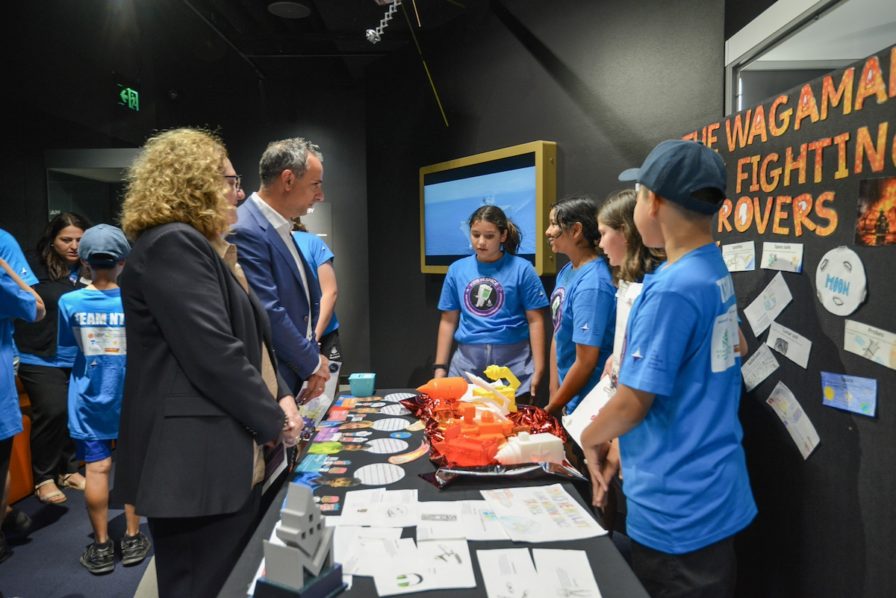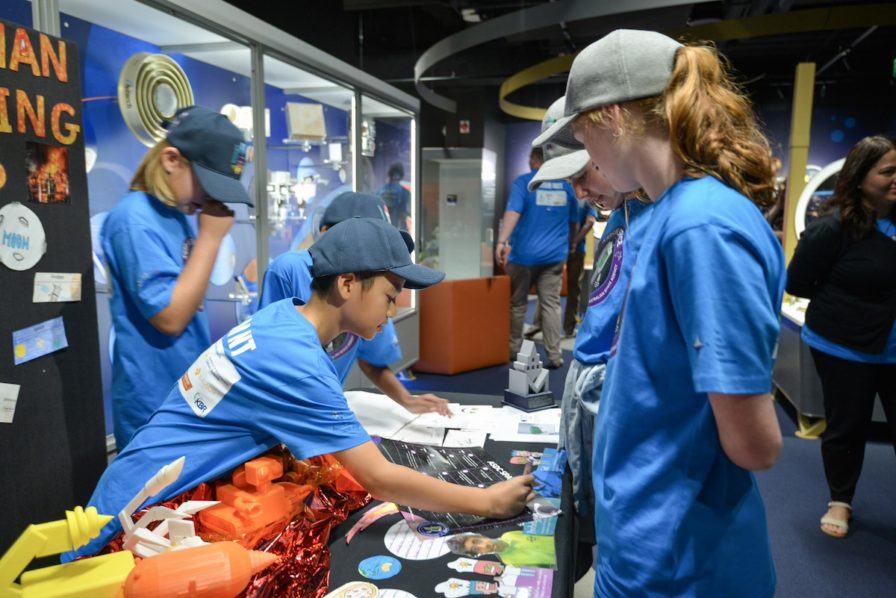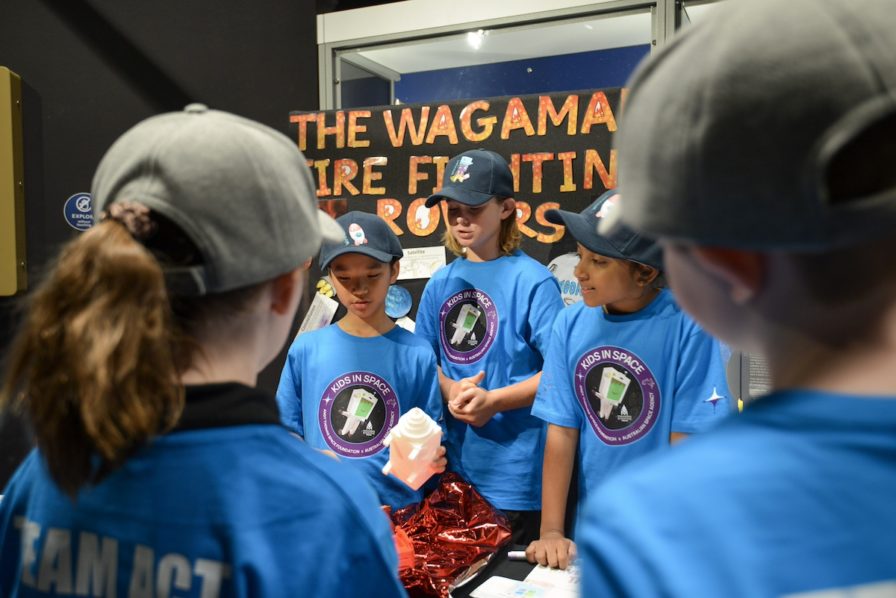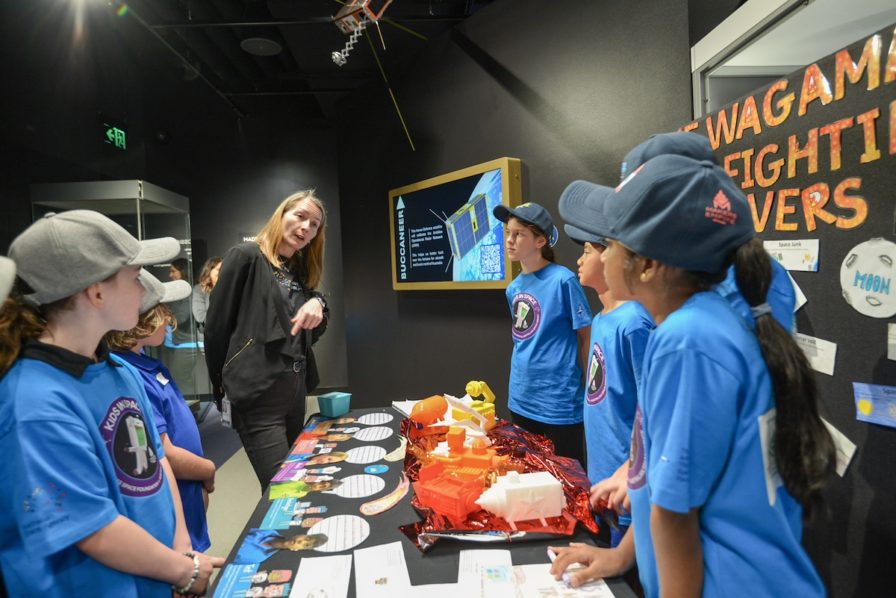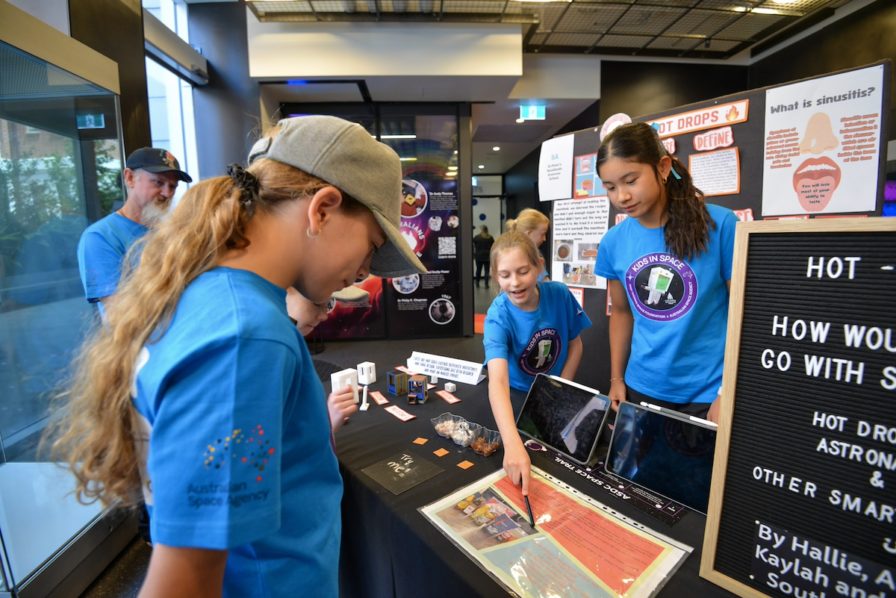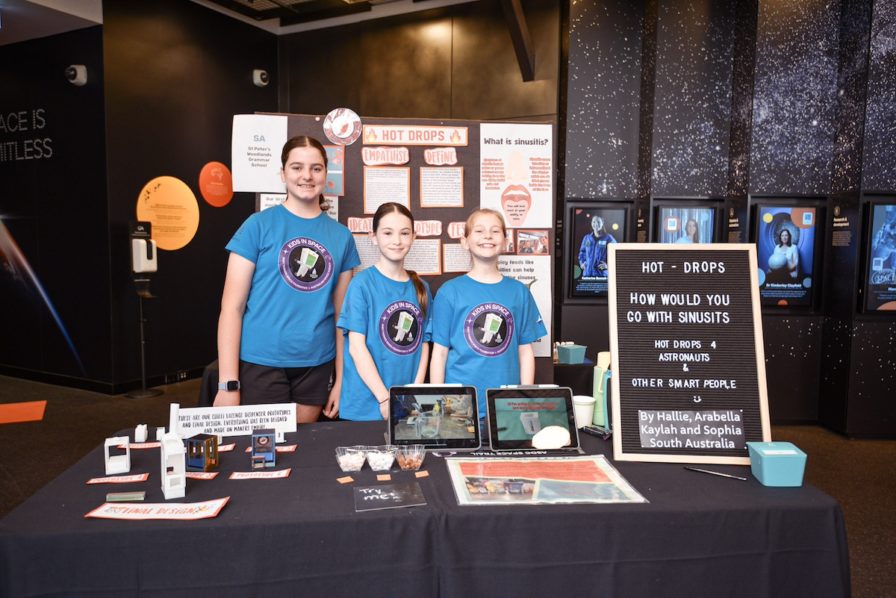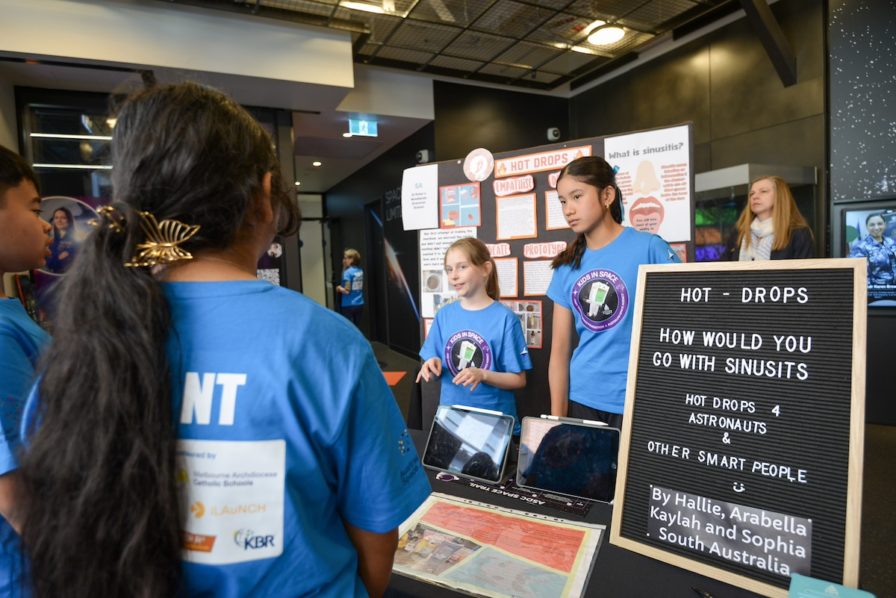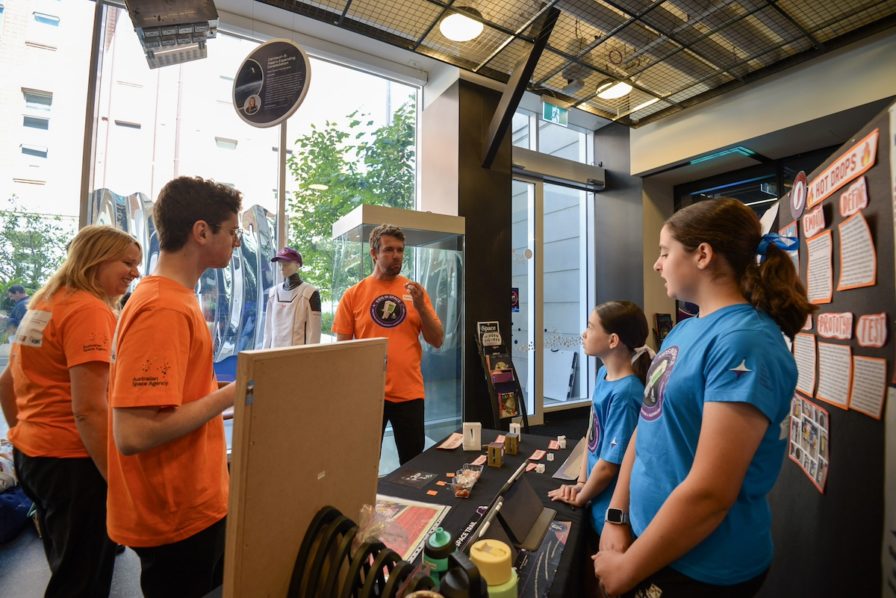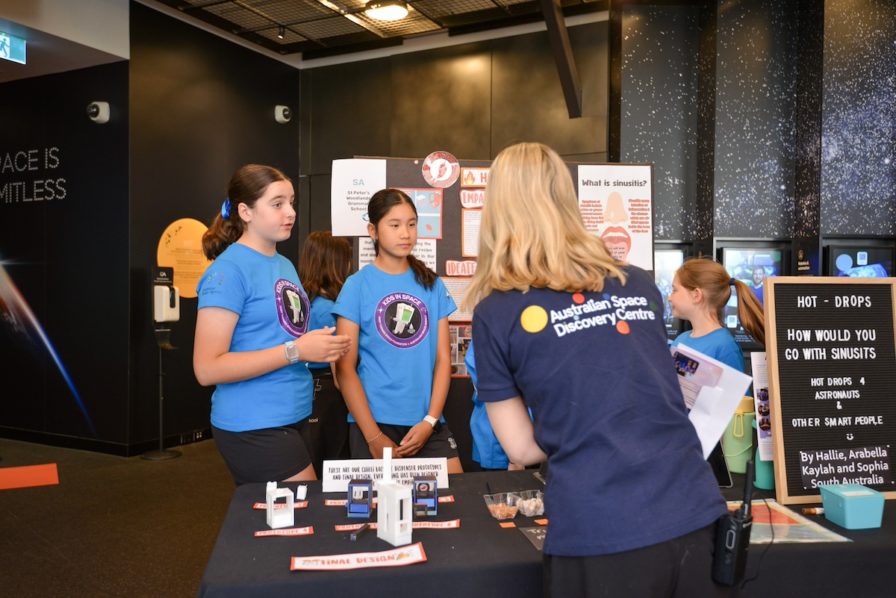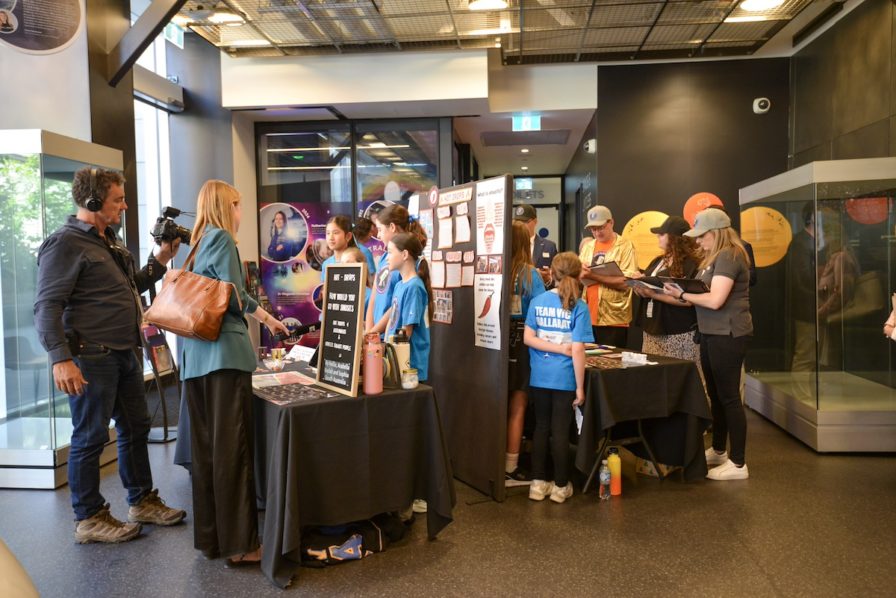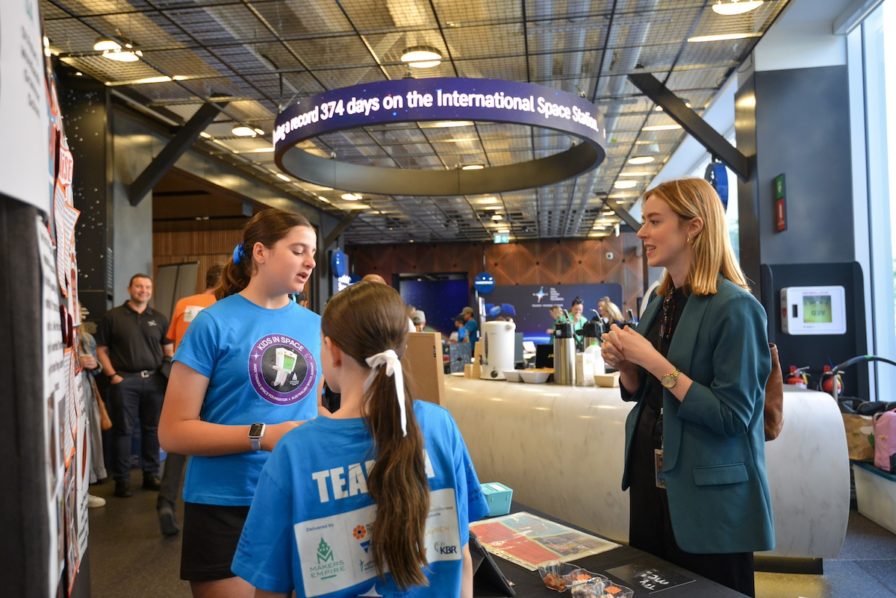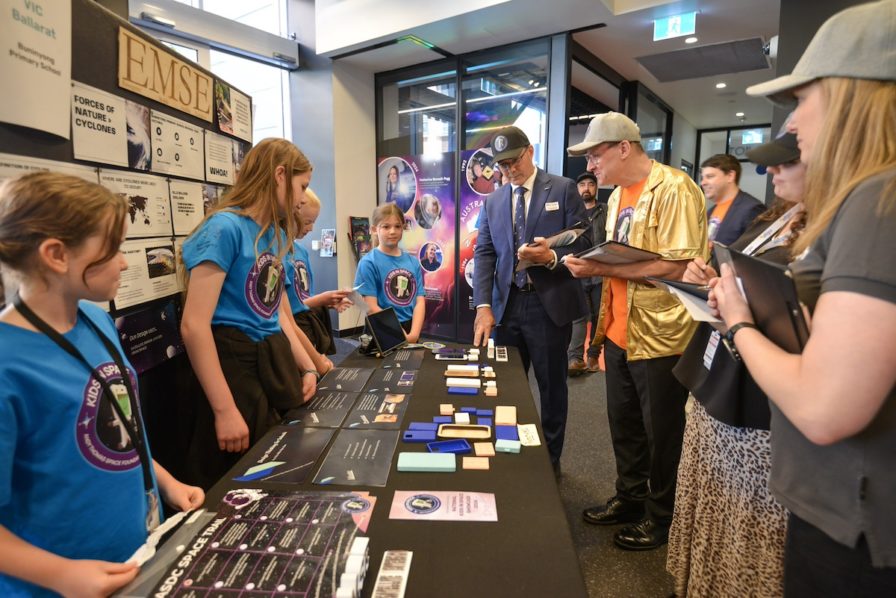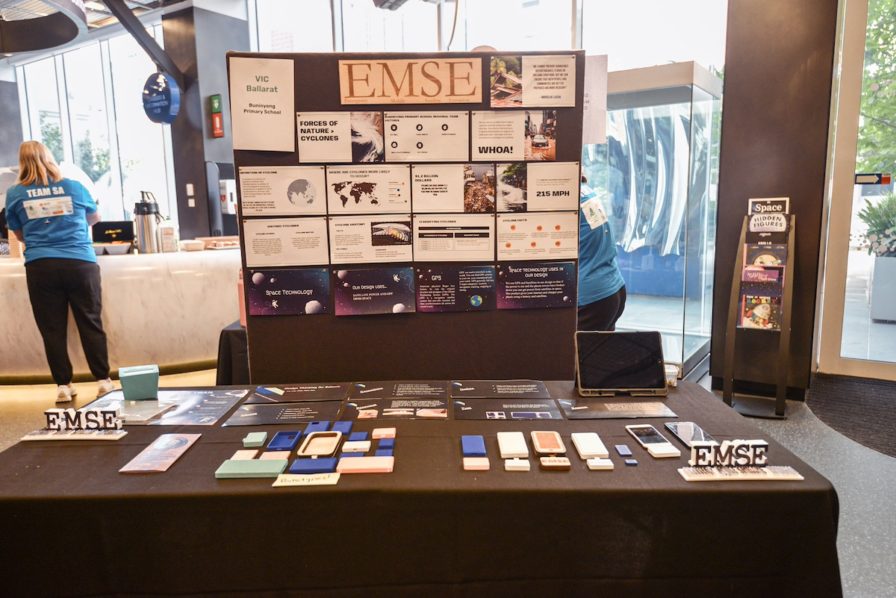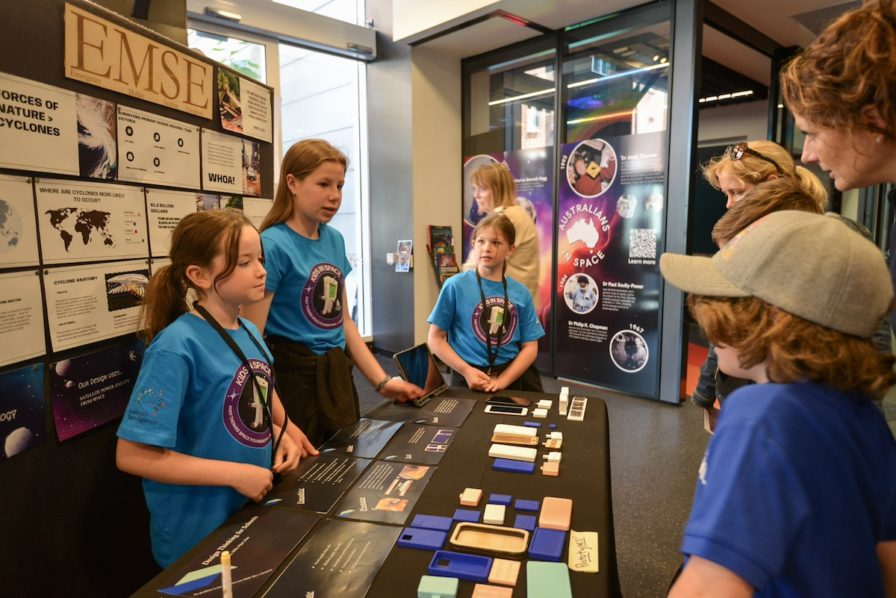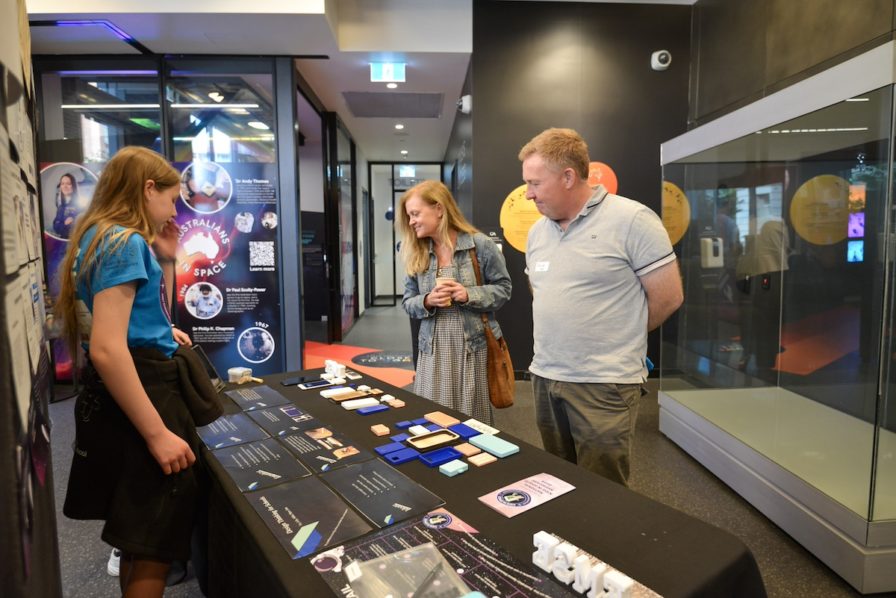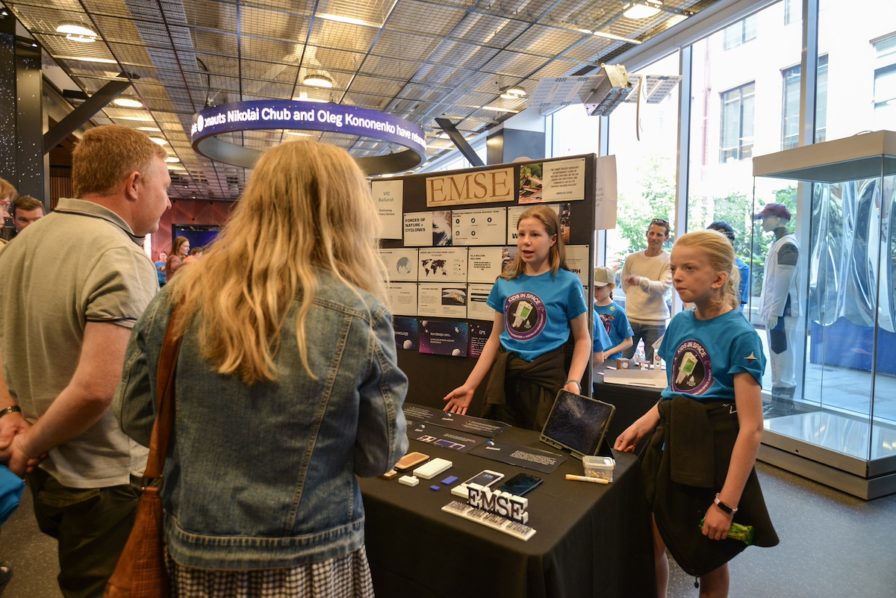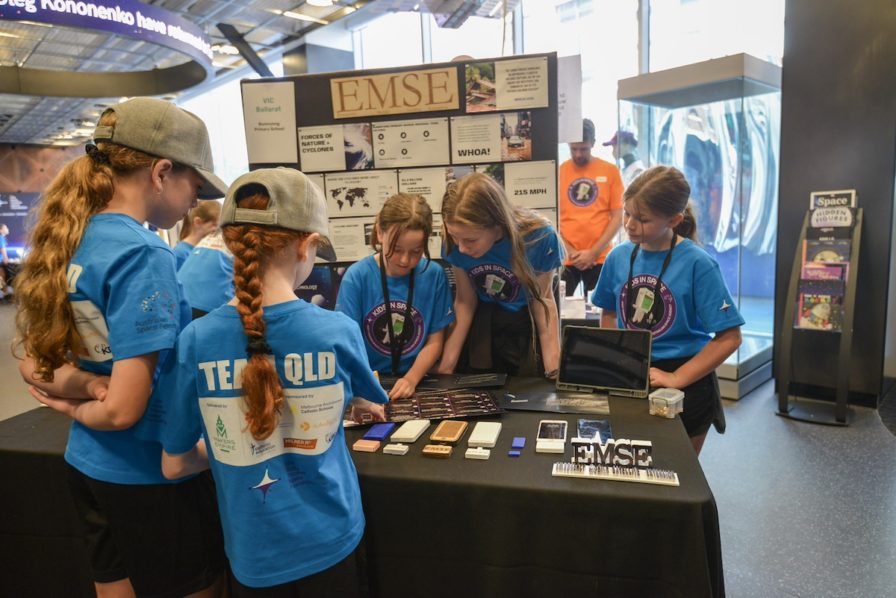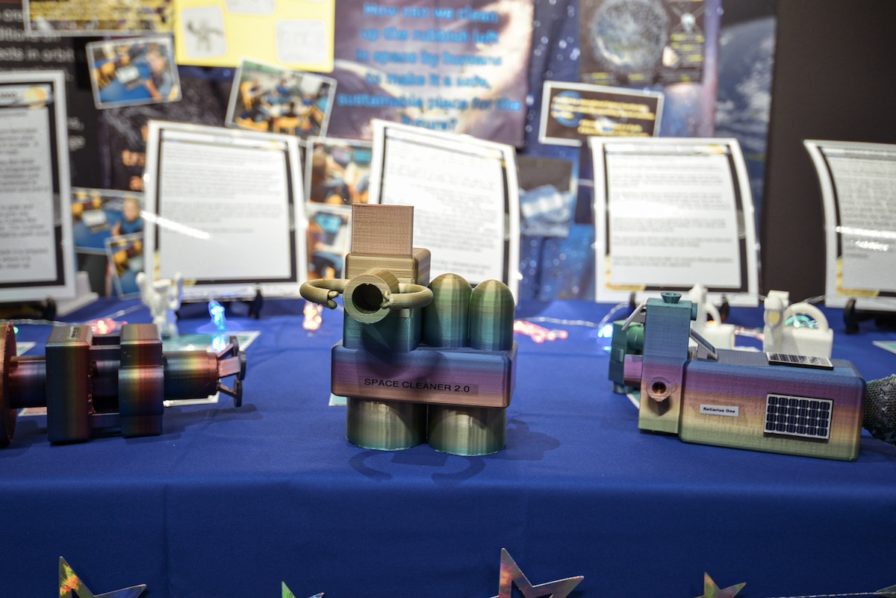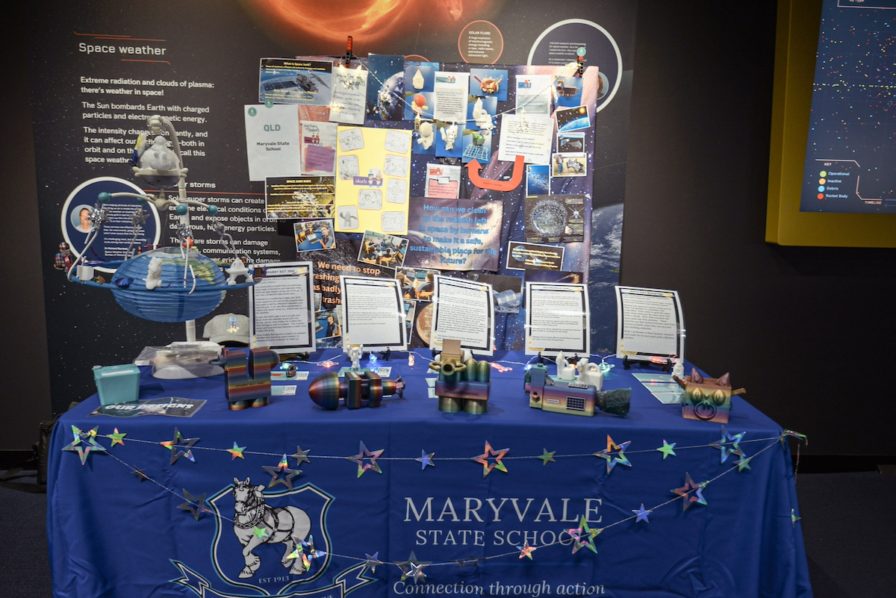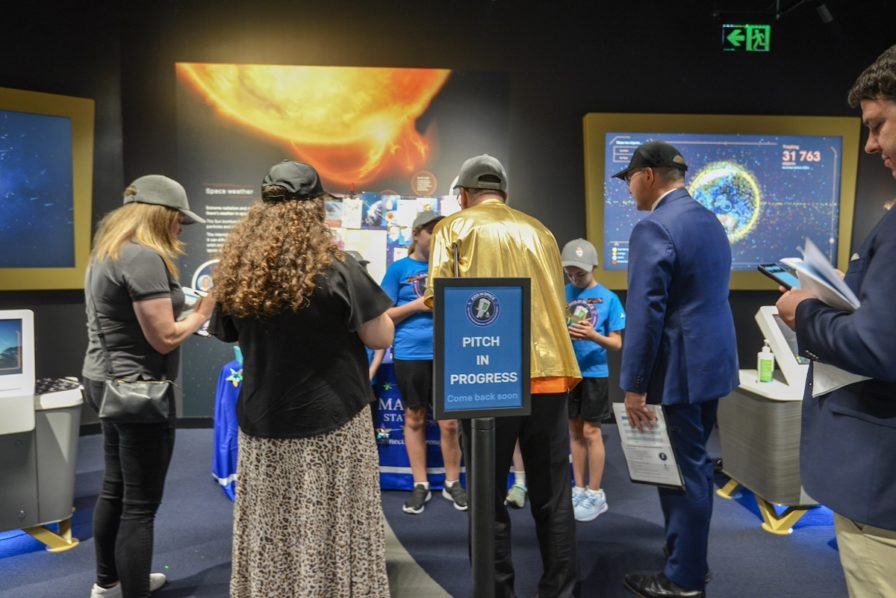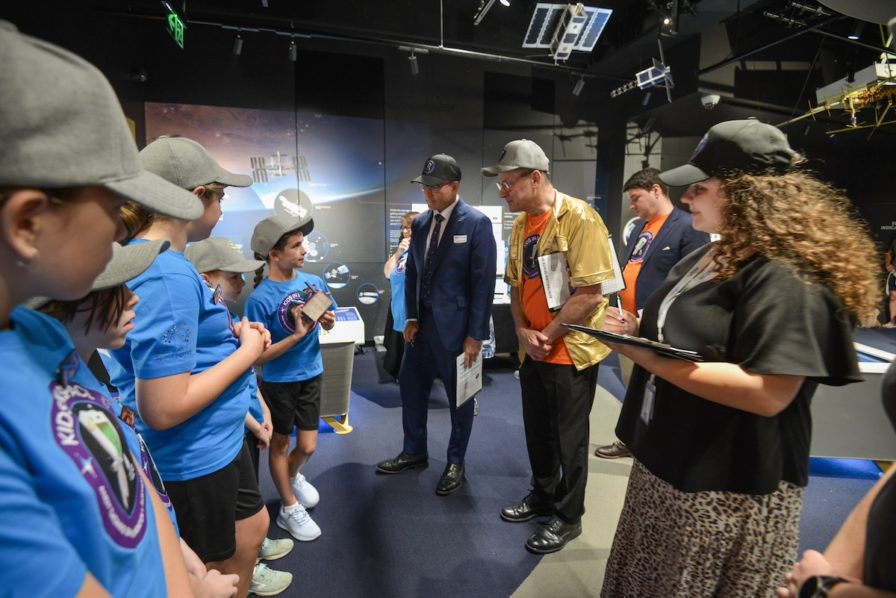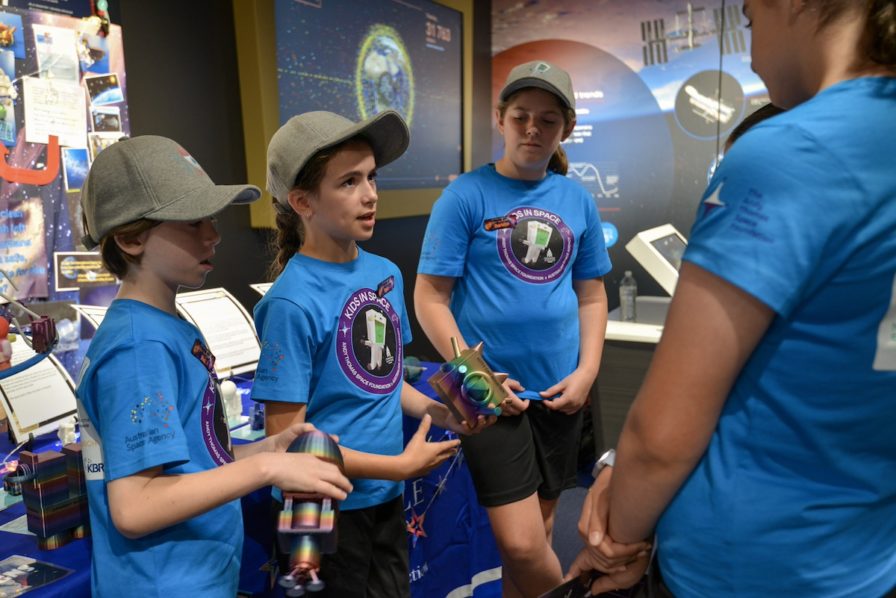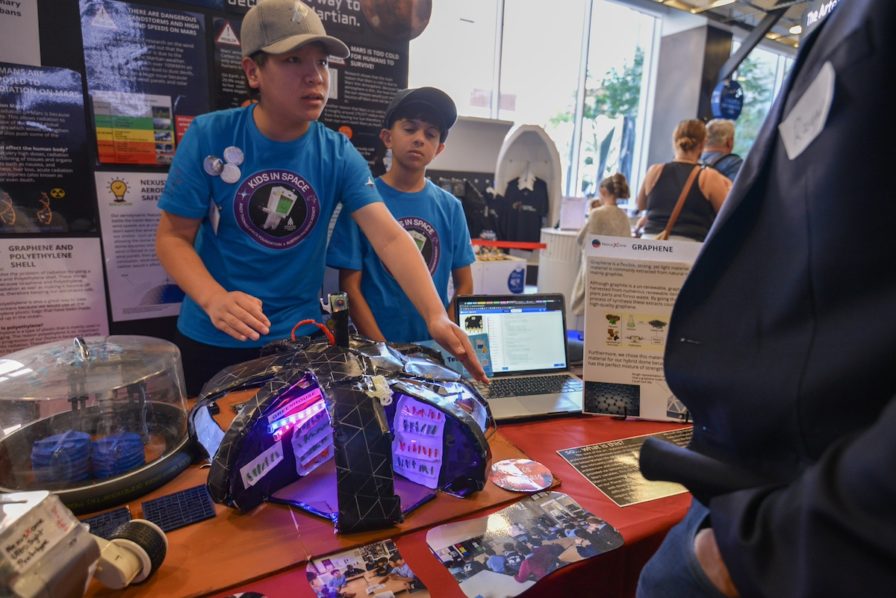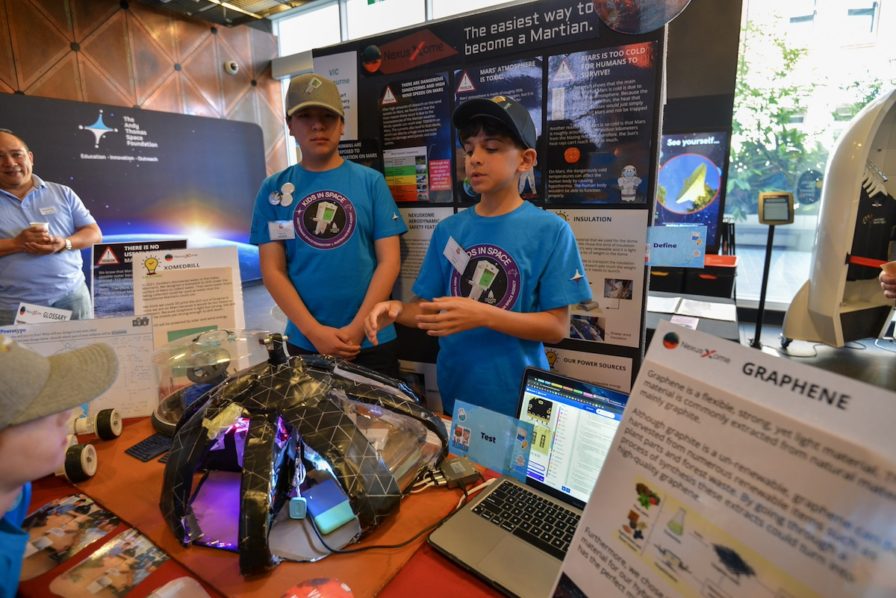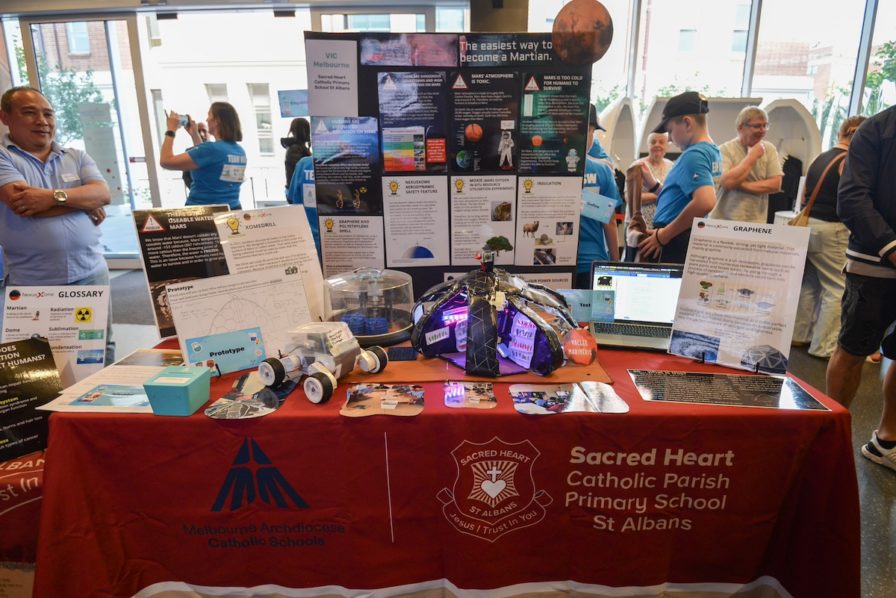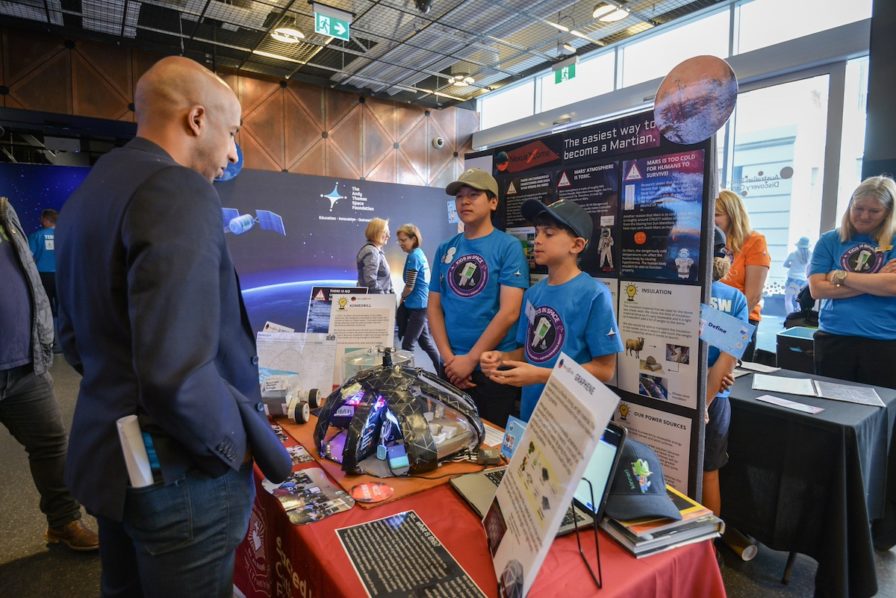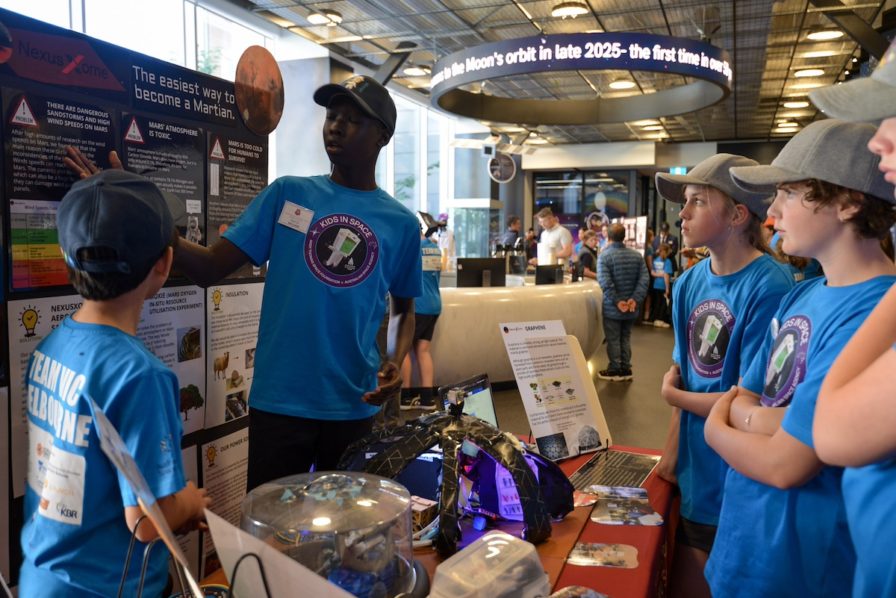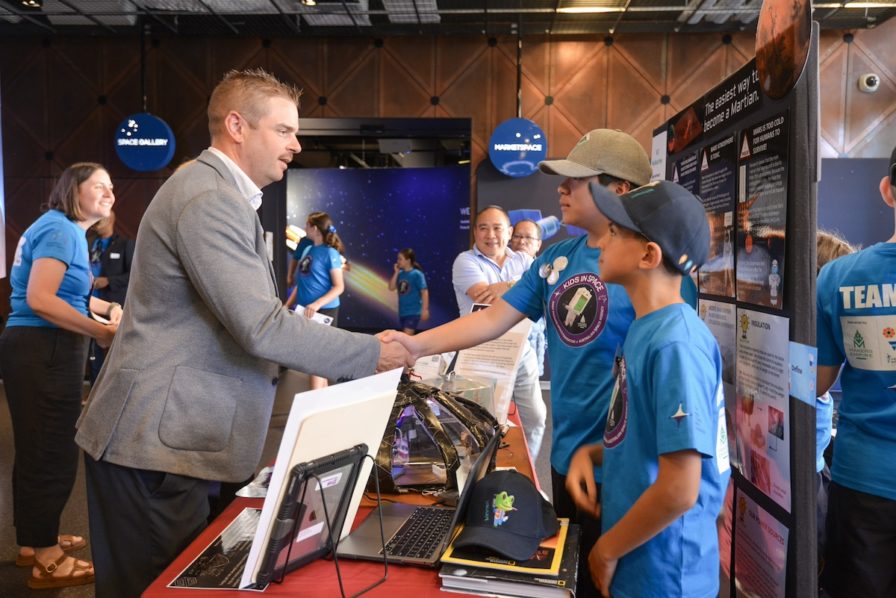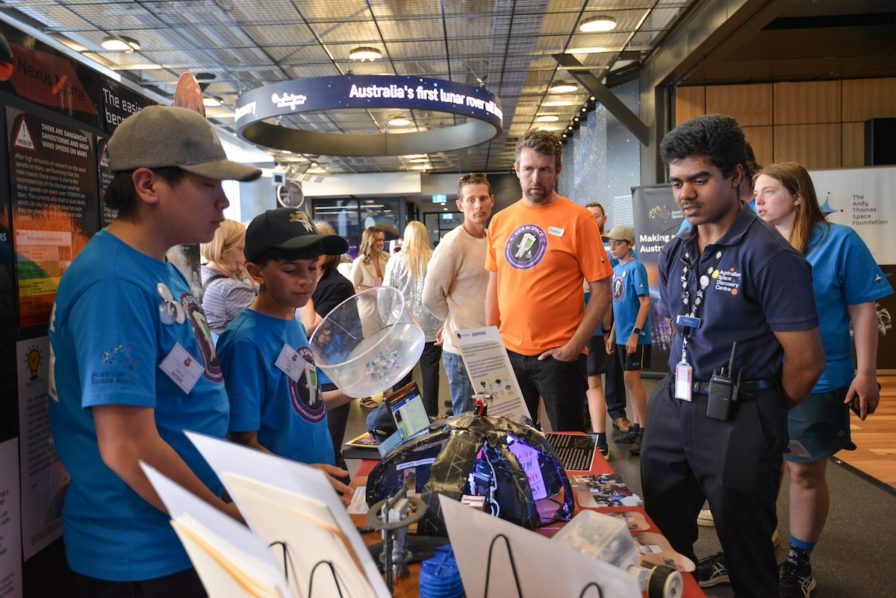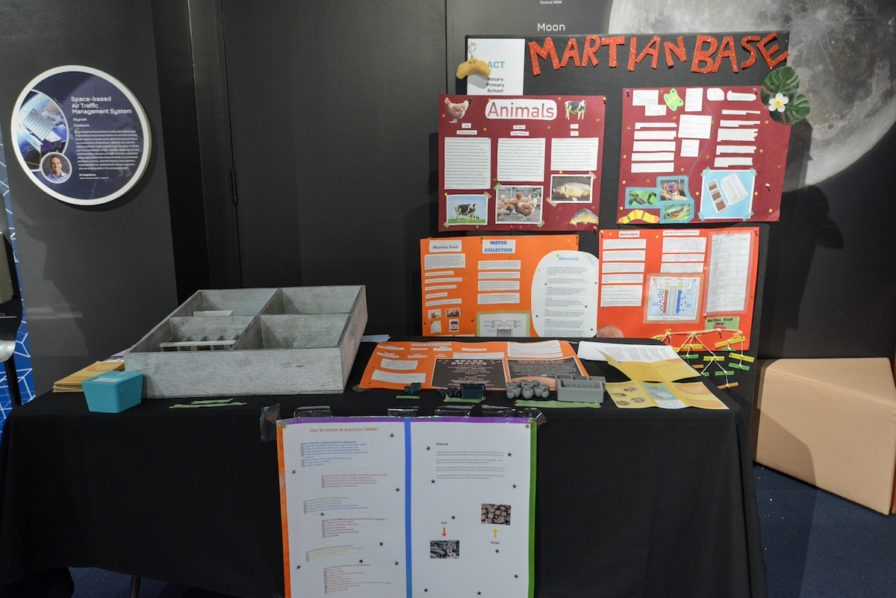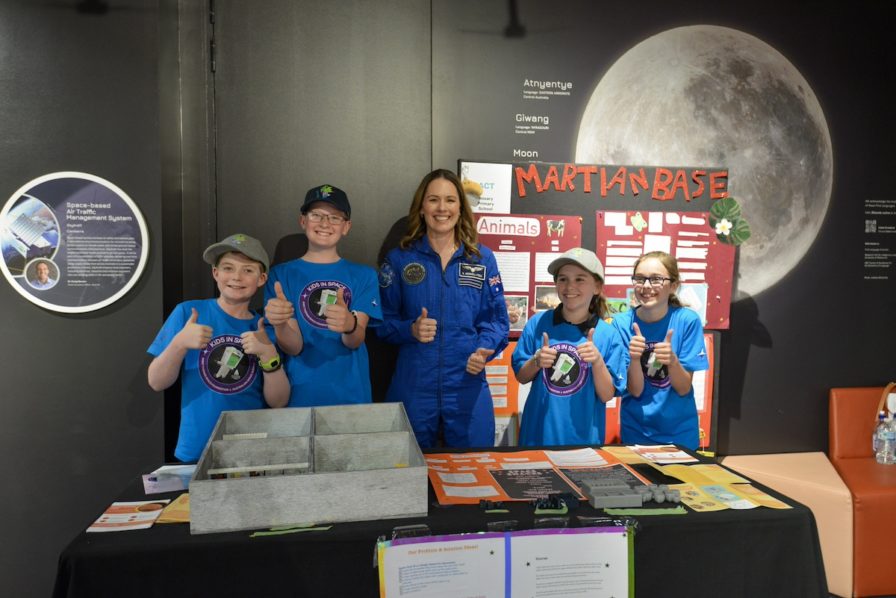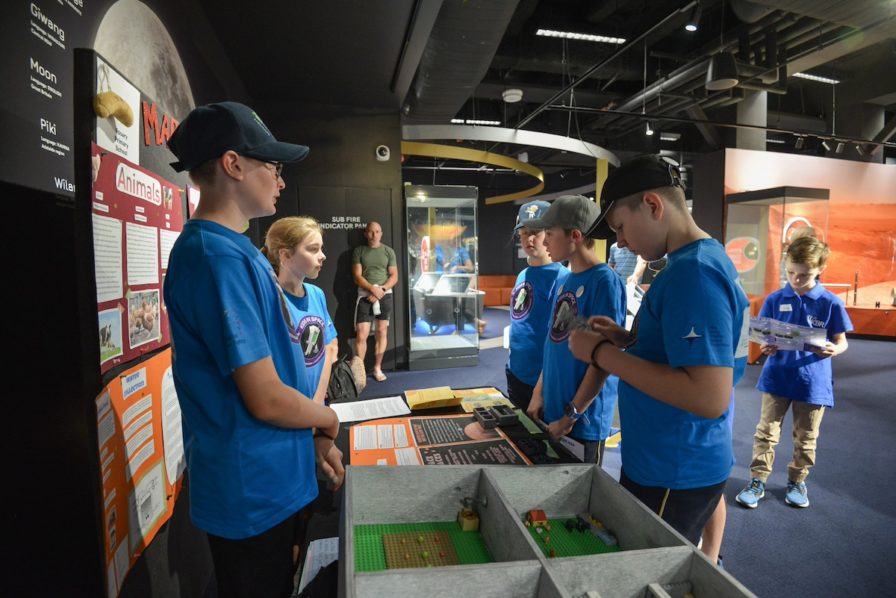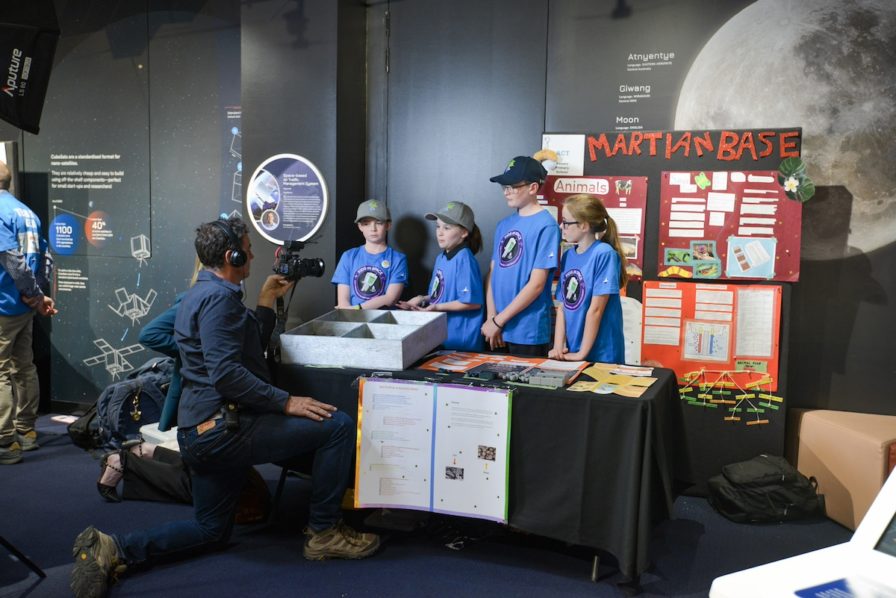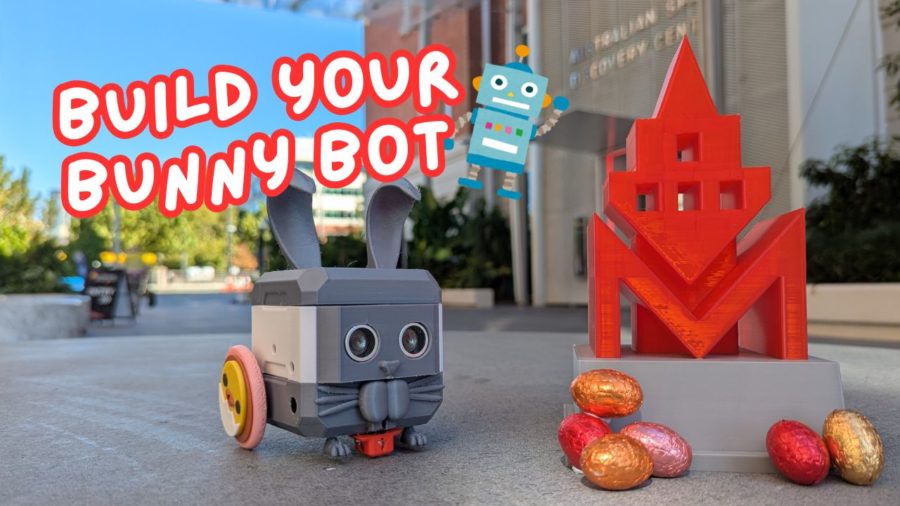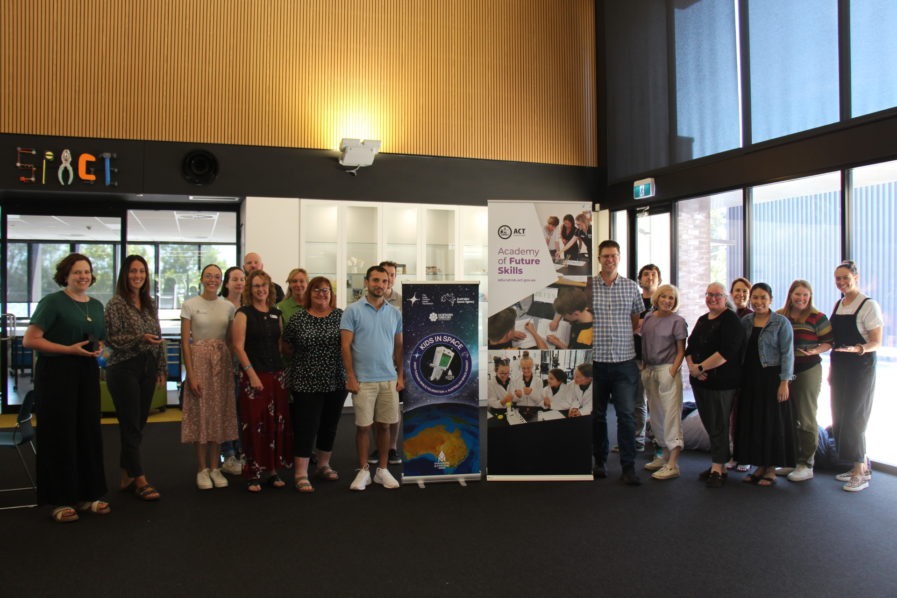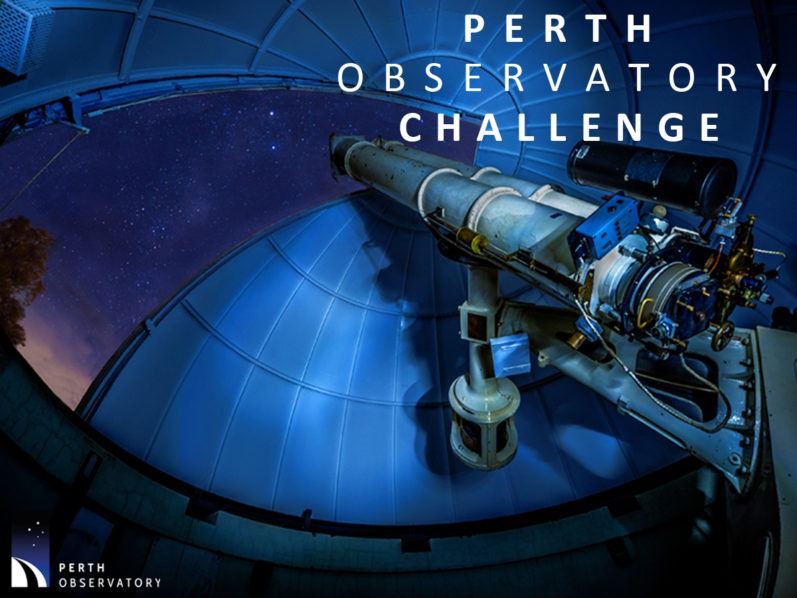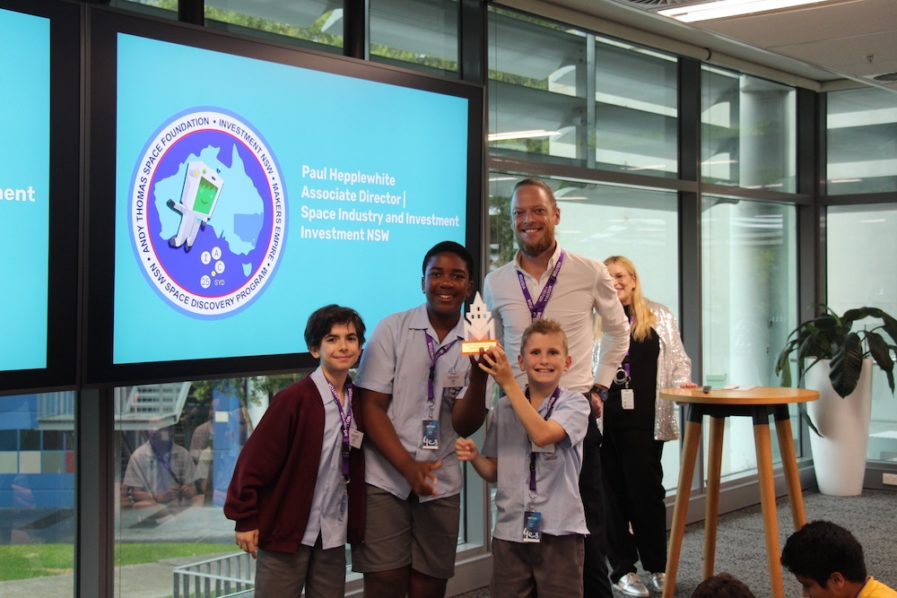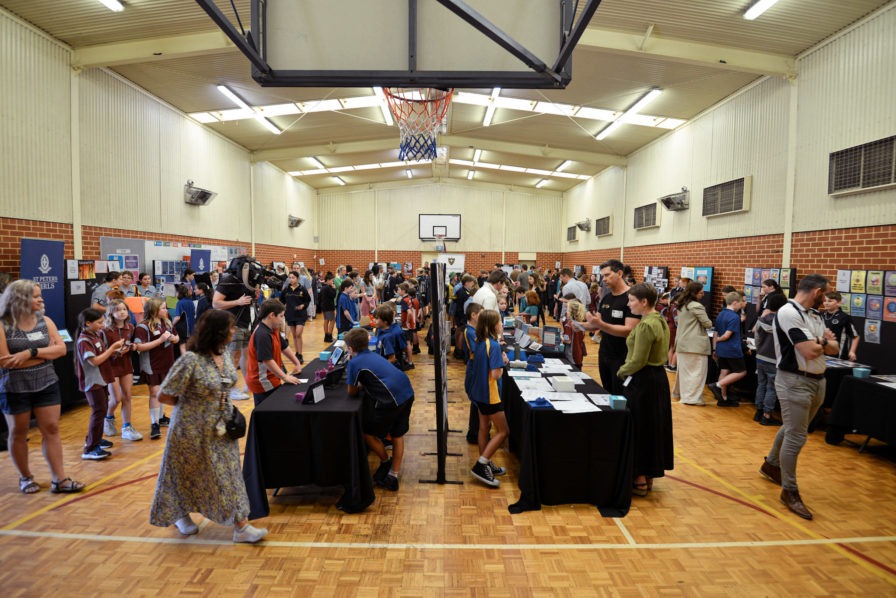Teams of primary school students representing ten schools from every state and territory in Australia came together this week at the Australian Space Discovery Centre to compete in the second Andy Thomas Space Foundation’s Kids in Space finals and showcase their winning space-inspired designs.
The Andy Thomas Space Foundation’s Kids in Space is an Australia-first, national education program that engages students in exciting, space-themed STEM learning and design thinking, supported by the Australian Space Agency and delivered by Makers Empire. With around 14,000 primary and middle school students, 115+ schools and hundreds of teachers across Australia impacted in 2024, it introduces students to space technology and promotes awareness of job opportunities in the space industry.
Kids in Space 2024
Kids in Space 2024 has grown significantly from 2023’s inaugural program of 65+ schools and 9,000+ students, thanks to new supporters such as the Victorian Department of Education, Melbourne Archdiocese Catholic Schools, Northern Territory’s Department of Education, iLAuNCH Trailblazer, Catholic Education South Australia (CESA), KBR, and the Milner Road Foundation. Thank you all for your wonderful support!
The 115+ schools comprise government, independent and Catholic schools. 49% of schools are located in regional, rural and remote areas, and 44% of schools are schools with a value below 1000 on the Index of Community Socio-Educational Advantage (ICSEA).
The 2024 Kids in Space schools were awarded a package worth $6,500 including professional development and training for teachers, Makers Empire 3D design tools and resources, access to a custom, space-themed Challenge Course in the Makers Empire 3D app, a 3D printer and filament, and state/territory student showcase events.
Kids in Space 2024 began with professional development days for teachers during February to May. Students then completed the space-themed challenge course and worked on their responses to the design thinking challenge: design something that might help astronauts to work and live in space or use space technologies to design something that will help solve a problem on Earth. Between June and September, Kids in Space schools in each state/territory came together for a local state/territory final where one of the schools was judged the state/territory winner. Then this week, the wining teams from each state and territory travelled to Adelaide for a welcome pizza party and the national Kids in Space finals at the Australian Space Discovery Centre.
Kids in Space National Finals 2024
On Monday 18th November, the Australian Space Discovery Centre (ASDC) was buzzing wth excitement as students and teachers and invited industry guests arrived for the Kids in Space National Finals. The students had visited the ASDC the night before for a welcome pizza party and fun educational activities to break the ice and introduce them to their peers from all over Australia.
The Kids in Space national finals began with an acknowledgement and welcome to country by Nate Taylor, Manager of the Australian Space Discovery Centre. Mandi Dimitriadis, Director of Learning at Makers Empire, then explained the day’s activities. Each school’s stand would be visited by the expert industry judges so students would have the opportunity to pitch their designed solutions and answer questions. Students would also take turns visiting each other’s stands and also complete a space discovery trail that would see them exploring the centre’s exhibits and visiting each other’s stands.
During an energetic expo-style showcase, students shared their winning designs with each other and pitched their winning designs to the judges: Peter Nikoloff, Executive Director, ATSF, Isabellla McCulloch, Senior Project Officer, Australian Space Discovery Centre, Darin Lovett, Executive Director, iLAuNCH, and Christine Gillon, Director People and Culture, KBR. The judges had the challenging task of choosing a national winner from amongst the eight teams that had each won their state/territory finals.
Whilst the judges were busy touring the stands, students were also visited by lots of invited space industry guests, who would later vote on their top three stands. Many of the guest commented on how well students pitched their ideas and solutions and how deftly they answered questions. Students also completed their space discovery trail activities and explored the ASDC’s exhibits.
Astronaut Katherine Bennell-Pegg, the first astronaut to train under the Australian flag, also toured the booths.
Following the showcase, students, teachers and invited guests heard from Michael Davis OA, Chair, Andy Thomas Space Foundation, Katherine Bennell-Pegg, Astronaut at the Australian Space Agency, Enrico Palermo, Head of the Australian Space Agency, and Dr Catherine Grace, Director, Space for the South Australian Space Industry Centre (SASIC).
The speakers shared their own experiences of working in space, the skills and experiences needed to work in space. They congratulated the teachers and students on their state and territory winning projects, and emphasised that everyone in the room was a winner.
The winners were then announced and students were presented with certificates.
Kids in Space National Winners
The Kids in Space partners and judges congratulate all of the winning schools. In particular, congratulations to the national winner: Our Lady of Queen of Peace School (SA: CESA) as decided by the guest judges and the industry award winner: Lauderdale Primary School (TAS) as voted on by the invited industry guests.
National Winner: Our Lady Queen of Peace School (SA: Catholic Education SA)
Industry Award Winner: Lauderdale Primary School (TAS)
Lauderdale students wanted to design an all-terrain Mars Rover. Students designed a new Mars Rover with multiple wheel types to travel across different terrains including the Olympus Mons Mountain on Mars. It can also be used to explore previously inaccessible regions on Earth like the Sahara Desert.
Other State and Territory Winners
WA Winner: St Joseph’s School Waroona
Students addressed a local community issue: their region was impacted by bushfire in March 2024 and firefighters had trouble accessing private properties to fight fires. Students designed a solution that provides information and access to properties for firefighters during a bushfire and also enables access to private dams as a water source using satellite data.
NT Winner: Wagaman Primary School
Students wanted to enhance the effectiveness and safety of search and rescue missions in hazardous environments. Based on their research, students designed firefighting rovers that use space technologies to collect and relay information to firefighters and first responders around signs of life.
Kids in Space 2025
Kids in Space will return in 2025. Expressions of interest have now closed but we are always keen to chat if you are interested in becoming a partner or supporter so more schools can be part of this Australia-first program.

